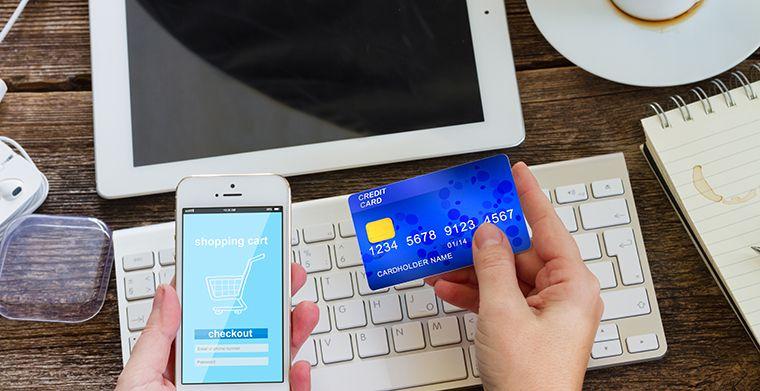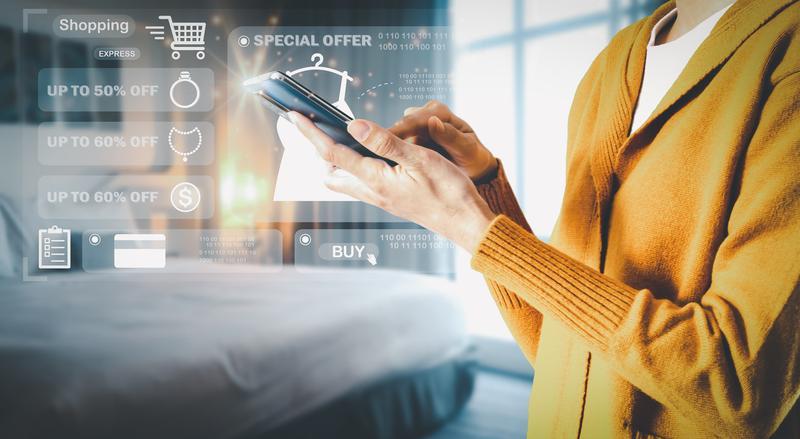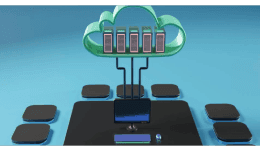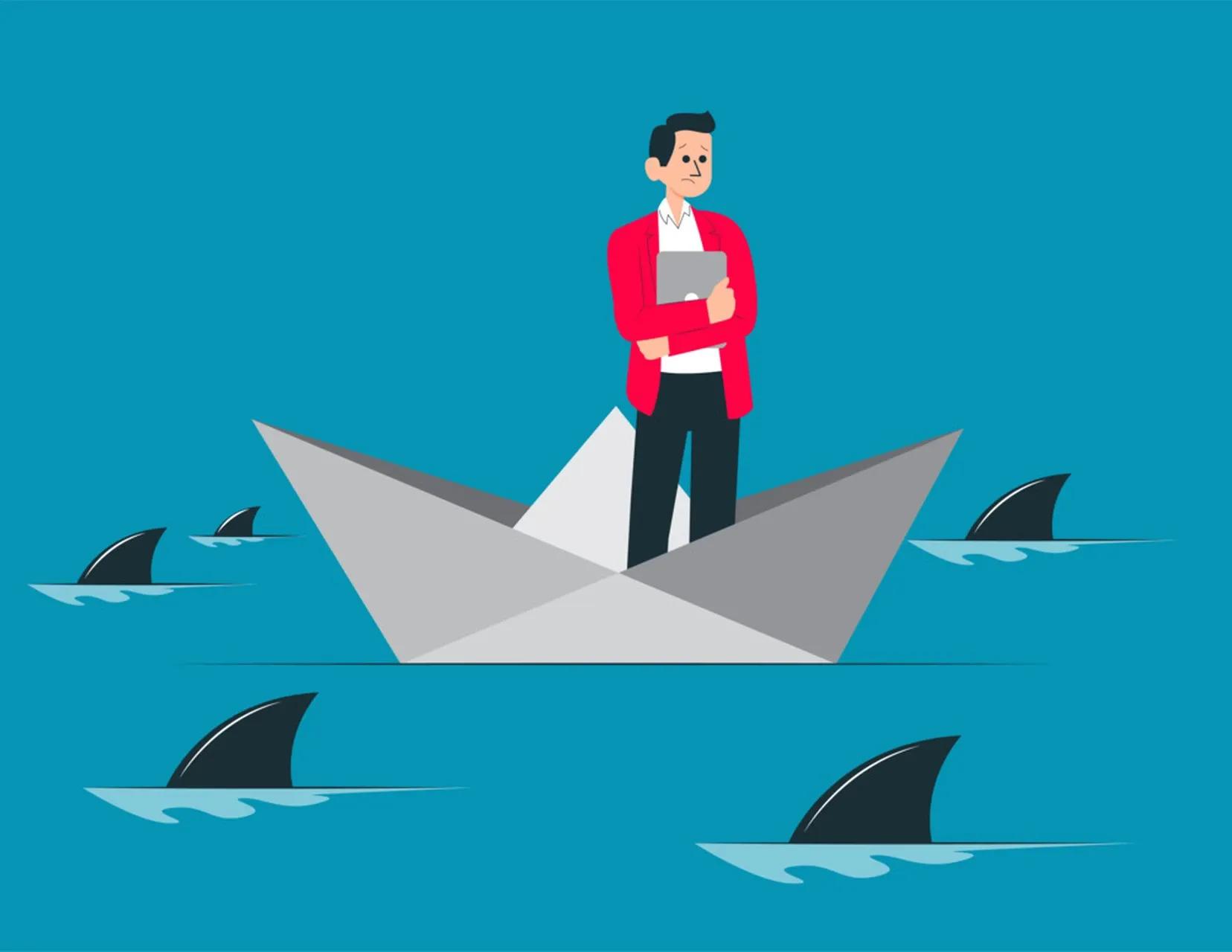筛选

BASHO email
A BASHO email is a personalized B2B email that aims at reaching decision-makers. It helps companies increase response rates and start conversations with potential customers.
In this article, we’ll uncover why send BASHO emails and how to write them. We’ll also unveil how to send a BASHO email for free.
Why send BASHO emails?
BASHO emails aim at reaching decision-makers of businesses who decide whether to choose a specific product or not. Emailing a company’s manager doesn’t always end in a sale. To increase the likeliness, brands use various strategies, including BASHO emails. A high level of email personalization enables companies to get more responses from potential clients and build communication with them. If a sales rep manages to establish connections with prospects, it can lead to a phone call or a meeting. This is the right time to discuss the details and lead a prospective customer toward a sale.
Many businesses send BASHO emails because they help
establish communication with decision-makers of different companies;
improve email open rate;
boost click-through rate;
increase conversions;
partner with bloggers.
Now that you know why to send BASHO emails to your potential customers, it’s time to find out how to write an effective email that converts.
How to write an effective BASHO email?
Consider prospects’ pain points and desires to create a successful BASHO email. In this section, we’ll unveil a step-by-step guide on how to do it effectively.
Identify prospective customers’ problems. Writing a relevant and effective BASHO email requires you to conduct short research. The main aim is to figure out the pain points of prospective clients. You need to find them to provide a targeted solution in your email. Once you finish with this quick analysis, you'll be able to identify your discussion topic and deliver your best solution.
Add specific personalization. Social media accounts of your prospects can also come in handy when personalizing emails. With their help, you can find interests, points of view, and opinions your leads can recognize. It will make your emails more targeted and interesting for potential clients. The number of opens will increase. You can start communication with clients and build trusting relationships with them by raising the topics of their interests.
Mention relevant events. You can grab prospects’ attention by promoting your product and with related events. Conducting specific events and unveiling them in your emails can be a great occasion for meeting and communicating with your potential client online and offline. Conferences will be a new source of information for your leads, where they will find out more details about your product. You can communicate its value, pricing, features, and benefits.
Use customers’ feedback to show that your product helps. Comments, feedback, and reviews of your current customers will always help you establish trust in your company. If they are satisfied with your product, it will help you win more new consumers. Use their feedback in your emails to show prospects that your product works and brings good results. Find the best way to communicate this information to your leads through emails.
Conduct research to find out interests. Besides discovering potential customers’ challenges, pay attention to their interests. This way, you’ll be able to grab your prospects’ attention and encourage these people to open and read your email. Start with something intriguing and eye-catching to make sure that your receiver will open your email. Be as targeted and personalized in your email as possible. It will help you bring in new people and win sales.
Now that you know how to write an effective email, let’s discover how to send a BASHO email for free.
How to send a BASHO email for free with LIKE.TG?
You can implement personalization and create an effective BASHO email for free. We’ll show you how to do it within minutes using LIKE.TG email service. Follow this guide to create your email in no time.
1. Register with LIKE.TG
Visit LIKE.TG’s website to sign up and create your email campaigns for free. Our service enables you to design and send BASHO emails in no time. Register to start your journey with LIKE.TG right now.
2. Add your mailing list
Click “Create mailing list” to add your contact and be ready to send email campaigns to your subscribers. Give a name to your new list and click the “Create” button. You can upload all your contacts to the system, copy past them or import them from the previous platform. Use email verification to check whether the email subscribers provided to you are valid.
You can also collect contact information with the help of subscription forms. This way, users’ data will come directly to the system, and you can use it for email campaigns.
Select “Subscription Forms” and click “Create.” Design your form from scratch or choose from a library of predesigned templates. Select a mailing list and insert the necessary information into the form.
3. Create segments
To make a new segment, go to the "Mailing list" section, choose the required mailing list, and go to the "Segments" tab. Click “Add segment” and set the segmentation conditions.
4. Segment your mailing list
Choose the necessary mailing list and tick “Use segmentation.” Name your segment and select relevant variables to target a specific group of people based on gender, country, name, etc.
5. Personalize the subject line
When customers open their inboxes, they instantly see the subject lines of emails. A catchy and tailored subject line encourages receivers to open emails and read their content. That’s why it’s crucial to write it well and include the receiver's name. If you include your subscriber’s name in your emails, you can succeed in establishing trust. Personalize your subject line by adding criteria.
Click "Add criteria'' and choose the most relevant criteria to include the name of your potential clients in your subject line. Click the “Insert” button to save the changes. This step is necessary for applying smart personalization. It helps address all the contacts on your list regardless of whether they have their name mentioned in the form. Customers with names, cities, and countries inserted will receive a personalized message, while others will get a generic one.
6. Personalize your email body
To make your BASHO email more targeted, consider using smart personalization in your email body. You can add different variables to address specific prospective clients.
In the drag-and-drop editor, create an email from scratch or use ready-to-go templates, click “Variables,” and select a specific variable.
Below we’ve created a template with the “Name” variable in the email body. Consider using different variables to design personalized emails for various cities, countries, hosts, subscriber IDs, etc. It will help you create emails that enable you to interact with clients and encourage them to read the content of your emails.
LIKE.TG allows you to create BASHO emails for free in no time. Sign up or log in to your free account to start sending email campaigns with no fee right now!
Congrats, now you know what a BASHO email is and why it’s critical. Hope that our guide will help you design effective emails that convert leads into customers. Use LIKE.TG to build professional, personalized emails and make sure that your campaigns are a great success.

Authentication
Email authentication allows ISPs(Internet service providers) to properly identify the sender of an email, and it helps to ensure high delivery rates. Authentication focuses on reducing spam, which makes up 67% of all email traffic (according to Forrester Research). It means that when receiving 10 emails, only 3 of them are worth the user's time to read.
Below is a video guide that will walk you through authenticating your emails with SPF and DKIM signatures in LIKE.TG.
In order to overcome the problem of spam, IETF (Internet Engineering Task Force) accepts several versions of authentication technologies. Two of them are used in LIKE.TG for phishing prevention and also spam blocking.
Authentication Technologies
1.DKIM(Domain Keys Identified Mail)
This technology allows companies to vouch for the email messages they send. Technically this is done with the help of a cryptographic signature linked to a domain name instead of a traditional IP address. To determine the sender’s reputation, “whitelists” and “blacklists” are used.
2.SPF(Sender Policy Framework)
This technology allows companies to identify the sender of an email and check whether the flow of emails includes spammessages. In this way, emails can be divided into “permitted” and “not permitted” depending on the recipient’s or sender’s domain.
In our service, your emails are authenticated automatically with the digital signatures of LIKE.TG, but it is possible to set up your own DKIM and SPF authentication. In this case, LIKE.TG displays your domain’s information in the email’s header. To implement this, you should add your DNS records.
Set up email authentication by following this guide, which will help you to edit your DNS records.

Average order value
An average order value (AOV) is a critical SaaS metric. It allows businesses to find out how much money a user spends making an order on a website. AOV enables marketers to get insights into consumer behavior and make informed decisions.
In this article, you'll get to know why an average order value is an important metric. You'll also learn how to calculate and increase it, so stay tuned.
Why is an average order value important?
Each business owner should monitor this metric regularly, especially in high-competitive industries. It informs them about the income from an average order during a specific period. If the indicator is low, users are not willing to spend much money for some reason. So, marketers try to attract new customers, implement new strategies that will help them increase income from existing customers, or change their pricing.
Acquiring new customers quickly requires significant investments and doesn't guarantee the flow of orders. Besides, you'll also need to work on increasing your website traffic. That's why marketers often choose another alternative. They try new strategies to make existing customers spend more money. They apply segmentation, personalization, loyalty, affiliate programs, etc. Hence, improving an average order value builds long-lasting customer relationships and maintains brand loyalty.
While implementing different strategies, marketers will analyze their customers' behavior, competitors, and market trends. They'll get valuable insights that will help them better understand their client's pain points, desires, and preferences. Later, they will be able to create segments based on this data and approach each consumer individually, resulting in high conversions and trustful relationships.
Now that you know the benefits you can reap by monitoring and improving your average order value, it's time to learn how to calculate the metric.
How to calculate an average order value?
It's to find out this metric for your business. Open your CRM system and check out the revenue and number of orders made per specific period. Then, use the formula below.
Average order value = Total revenue/Number of orders
For example, you have a clothing store selling T-Shirts and jeans. The price for each item varies from 20 to $60. During the previous month, your store sales were $25,000, and you had 720 orders. Let's calculate your average order value for the last month.
25000/720=35
So, your AOV was $35. So, you can draw the following conclusions. Firstly, your customers tend to buy low-price items, most likely T-shirts. Secondly, something is wrong with the sale of jeans. Thirdly, you don't use upselling and cross-selling strategies, and your clients don't buy multiple items. Based on this information, you can already get a hint at increasing your average order value.
So, in the next section, we'll share some effective strategies. Read on.
How to improve an average order value?
If you consider increasing prices for your products an incorrect strategy, check out other tips that will help you earn more without big investments.
Segment your customers. To sell more, you need to know the people you're selling to because you can't treat all consumers the same way. Create different segments for your buyers based on their purchasing history. For example, low, medium, and high spenders. Then, you can approach each group individually. For example, you can offer your low spenders to buy two items at a reduced price. Medium spenders can be offered free shipping when reaching a certain threshold. And high spenders can be rewarded with a loyalty program that will stimulate them to spend more. With LIKE.TG, you can segment customers and send them personalized emails for free.
Implement cross-selling, upselling, and bundling. These are highly effective sales techniques that customers like. With cross-selling, you can recommend a complementary product that will make using the initial item with much more pleasure. Upselling lets you advise buyers to choose a more advanced and upgraded item instead of their initial choice. Bundling enables consumers to save money by buying several products at a reduced price. You can use these technics on your product cards, in the checkout, or via an email campaign.
Provide free shipping. If you work in an oversaturated niche, your customer will choose your competitor, providing this option. So, to offer free shipping without going broke, you need to set affordable spending for your business that will cover shipping expenses. Inform customers about free shipping on orders over a certain dollar amount at checkout. This way, this purchase will seem an excellent bargain. Consider using different thresholds for different shipping zones. Otherwise, you can lose money.
Give coupons. This is another selling trick that works. Receiving a discount makes clients feel valued and important to the brand. You can offer a coupon after buying for a specific dollar amount. For example, let your customer spend $60 and get $10 off their next purchase. It acts like a game and motivates users to buy more to reach another level. Then, you can provide them with additional personalized perks.
Encourage clients to join a loyalty program. It is a win-win for both parties. Companies can increase sales, reduce customer acquisition costs, reward loyal customers, and build long-lasting relationships. Clients can reap additional benefits like purchasing with a significant discount and getting gifts. There're lots of options for launching a successful loyalty program. You can stimulate your customers by giving them points after each purchase, encouraging them to participate in a subscription-based program, enabling them to get cashback, or offering them to reach a VIP tier with exclusive individual discounts.
Increase prices based on adding value. If you work in a competitive industry, setting higher prices may not seem relevant since customers can easily switch brands. Still, you need to analyze your competitors to determine their weaknesses and act on them. For example, if they have lower prices but have no refund or return policy and don't provide a guarantee, do that. Clients appreciate excellent service. If your competitors offer such perks, go further and offer assistance with your product a month after the purchase. You need to know your clients' difficulties with your product and solve them to your advantage. People are ready to pay more to companies that care.
Congrats, now you know how to calculate and improve your average order value. Use LIKE.TG promotional tools to boost sales without much sweat!

Autoresponder
An email autoresponder is a series of messages sent automatically to a mailing list based on specific rules at defined intervals. The process may start after a user subscribes to the sender’s email list or when a particular condition is met.
Marketers use email autoresponder functionality to send both promotional and educational content at the right time without much work. With each email series, the sender should set out to address the concerns of theirprospects and emphasize the benefits of their businesses, products or services.
How about an example? A marketer can set email autoresponders so that 5 minutes after someone joins the mailing list, they receive a welcome email. Then, if subscribers shared their birthdates, the company sends them a birthday email with a unique offer. Besides, marketers use email autoresponder to send emails predefined by subscribers’ action.
What is the purpose of an email autoresponder?
An email autoresponder series enables companies to build trust with their prospects. Email autoresponders get a recipient to open promotional emails, visit websites, and eventually make a purchase. Most sites use email autoresponders to provide their subscribers with the most relevant offers at the right time. Besides, this automation tech helps eliminate mistakes caused by human error when email scheduling is needed.
Advantages of email autoresponders
Turn new visitors into subscribers
Establish stable and long-term relationships with subscribers
Ensure continuous advertising without hiring new staff
Offer immediate follow-up
Create repeat sales
Direct customers to websites or blogs
Help marketers access measurable results
Ensure better delivery of marketing emails
Help marketers increase brand awareness
Email autoresponders come bearing gifts for marketers. Here is what they can do:
Turn new visitors into subscribers.Email autoresponders offer an excellent communication line with new visitors on a website. Marketers provide valuable offers in these email series that entice the visitors to submit their names and email addresses. In exchange, users receive exciting offers, including free reports, trial offers, no-obligation consultation, and more.
Establish stable and long-term relationships with subscribers.Email autoresponders allow marketers to create automated messages and schedule them to go out to their subscriber lists on specified dates. This way, subscribers hear from the company frequently and look forward to future communication. This anticipation creates a unique bond between a business and the prospective customer.
Ensure continuous advertising without hiring new staff.Email autoresponders take care of regular marketing email delivery to customers and prospects. And given that the process is entirely automated, there is no need to hire new people to do the job. So, a business has no extra expenses and earns a better return on investment.
Offer immediate follow-up. With email autoresponders, a marketer can diligently follow-up with customers without leaving any of them out. These emails are automated, thus eliminating the possibility of missing customers or prospects who are on the mailing list.
Create repeat sales.Email autoresponders ensure that there is constant communication with existing customers. Marketers use cross-selling and upselling to cause repeat sales.
Direct customers to websites or blogs. Marketers use email autoresponders to direct subscribers to video channels, blogs, websites, discussions on socials and so forth. These different channels display information regarding a company and help the prospects or customers better understand the products or services offered by a brand. This results in both traffic and conversion increases as the users have access to facts that influence their buying decisions.
Help marketers access measurable results. Marketers can gain a variety of meaningful insights from email autoresponders that help evaluate their strategies better. For instance, they help senders find messages that are read most, the time when most messages are read and so forth. In turn, marketers can tweak their email campaigns to ensure that content is personalized and higher engagement is achieved.
Ensure better delivery of marketing emails.Email autoresponders eliminate any guesswork from email delivery. They are designed to ensure that all messages in the system are sent on time to all subscribers on a mailing list.
Help marketers increase brand awareness. Marketers can brand their email messages by adding their taglines, logos, physical addresses, and phone numbers to ensure that they emphasize their products or services to prospective customers.
How does an email autoresponder work?
Marketers that use autoresponders have a lot of their email marketing automated. Email autoresponders consist of two individual components that work together to achieve the primary goal. The first is the automated email campaign which includes marketing messages that are sent to subscribers when specific events or actions are triggered. Then there are the automation rules. These are triggers or actions the sender puts in place to determine when particular automated messages are to be sent.
For example, a business wants to follow-up on customers who made purchases by cross-selling and upselling. So, a sender creates a particular message and sets a trigger such as the purchase of a specific product. When a customer buys the item, the action is triggered, and the automated email is sent.
Businesses and websites can set up email autoresponders to inform customers about special offers or new posts, send welcome emails or gifts to subscribers who have just signed up. One can also use them to send other email messages that keep the subscribers engaged. To get started, register and set up an email autoresponder in LIKE.TG.
How to create an email autoresponder series
Set up an event in Automation 360
Create the necessary email templates
Connect emails in a sequence
LIKE.TG allows you to create or upload mailing lists and send email sequences to subscribers when they perform particular sets of actions. Here’s how to create a custom event-based autoresponder using LIKE.TG’s Automation 360.
Step 1: Set up an event in Automation 360
Decide which user action will trigger email sending. Actions like shopping cart abandonment, registration, subscription, purchase, etc., are called events.
Go to the “Automations” tab in your LIKE.TG account, open the Event Manager, choose the type of event, and add the generated code to your website.
Here’s a detailed guide to creating events.
Step 2: Create the necessary email templates
Design email templates to include in your autoresponder sequence. With LIKE.TG, you can do it in three different ways:
Create email templates from scratch with a convenient drag and drop editor;
Take templates from our free library and customize them to your liking;
Use our Chrome extension to save any email from your Gmail inbox as a customizable template in your LIKE.TG account.
You can create an email template, like in the one in the screenshot below, in half an hour.
Step 3: Connect emails in a sequence
Use the event you’ve just created as the start of your autoresponder. Then, connect your email templates with the “flow start” element and with other elements to create the automated flow. Enter the subject lines and schedule the sending time for each element in the flow.
Here’s an example of an abandoned cart autoresponder series created with LIKE.TG’s Automation 360.
Now, that you're acquainted with the technical side of things, let’s check out some inspirational examples.
Email autoresponder examples
Here are some examples of common email autoresponders:
A subscription confirmation email. This email is sent right after a user leaves their email address on a website. Marketers use this method to build a high-quality mailing list.
A welcome email. This is an onboarding email for new subscribers. Marketers usually send it to give a warm welcome and shoe what their brand is engaged in.
A birthday email. This is a good chance to congratulate subscribers on their special day, increase sales and raise customers loyalty. Brands usually create special offers and give discounts.
Register and send an email autoresponderwith LIKE.TG!
Send an email autoresponder

Authorized dealer
An authorized dealer is an individual or company authorized by a manufacturer to sell its products. This dealer has a franchise to represent a well-established brand and distribute its products.
Some manufacturers require your company to only sell their products, while others allow you to provide customers with other products or services.
Why become an authorized dealer?
Whether you’re starting your business or want to be a reseller to supplement your current company, becoming an authorized dealer has several advantages:
it allows you to receive certification from experts;
it provides you with financial support;
it enables you to sell products from a famous brand;
it allows you to use an established brand name.
You can sell products from well-known brands in large quantities to commercial customers online or in retail outlets if your company meets certain requirements. The manufacturer or service provider will inform you about the requirement you’ll need to fulfill.
Now that you know the pros of becoming an authorized dealer of an established brand, let’s explore the difference between authorized and unauthorized dealers.
Authorized Dealer vs Unauthorized Dealer
When it comes to buying and selling products, it is essential to understand the difference between authorized and unauthorized dealers.
Authorized dealer
Becoming an authorized distributor has several advantages:
a contractual relationship with a manufacturer;
official rights to sell the brand’s merchandise;
recognition from the brand;
a good reputation as the manufacturer verifies its merchandise is authentic;
the products are covered by the manufacturer’s warranty.
Famous brands prefer authorized dealers as they ensure supply chain transparency, pricing consistency, and greater revenue.
Unauthorized dealer
On the other hand, unauthorized dealers have no official rights to sell the products of a specific brand. These dealers usually get genuine merchandise from overseas and bring it to the country to sell. However, such products are of low quality because of the damages and defects which appear on the product during improper shipping. Also, they can be acquired from unreliable sources which can result in you selling used or stolen goods. Although buying from unauthorized dealers doesn’t guarantee high quality products, customers still do it because of the lower prices.
Grey market goods affect the sales price. As a result, authorized retailers have to sell their merchandise for less to compete with lower-priced authentic products.
To alleviate any confusion with the process, we’ve put together a step-by-step guide to becoming an authorized dealer. Follow the five steps below.
How to become an authorized dealer
Choose the industry
Find the right location
Handle the documentation
Get enough inventory
Launch your distributor platform
An authorized dealer is a company that has official permission to sell products from a particular brand. It allows you to provide customers with products or services of an established brand and access their built-in consumer base. To become a distributor, you’ll need to register your business like any other startup. If you’re giving a thought to becoming an authorized dealer, here are five steps to consider.
1. Choose the industry
Decide what industry you want to tackle and what the best fit for you is: electronics, food, apparel, or shoes. There are dealers in almost any retail industry, so there is no limit for you to choose.
Let’s take the world of sports, for example. The National Hockey League enables businesses to become commercial licensees and sell their official merchandise. However, if you decide to become a beer distributor, you’ll need to get a permit from the United States Alcohol and Tobacco Tax and Trade Bureau.
2. Find the right location
Different distributors have different strategies that result in different functioning. Although you can start your business from home, you’ll still need to have a warehouse to store your products. First of all, choose inexpensive warehouses that are close to your customers. Some manufacturers even require it from their sellers. For example, Katun, a manufacturer of printer and copier toners, asks its distributors to provide local delivery.
3. Handle the documentation
Research which licenses and permits are necessary to get started with your reselling business. You’ll need a wholesale license to act as a middleman and purchase products wholesale from manufacturers without paying sales tax. Additionally, you will need to contact the manufacturer to discuss product distribution. Start by filling out an online application form or contacting the local sales office.
For example, Apple asks its authorized dealers to use Apple-certified repair technicians. So your technicians will have to go through the certification process.
4. Get enough inventory
The industry you choose defines the amount of inventory you’ll need to have. Calculate the approximate required number of products that you should have in stock. Keep in mind that if you don’t have enough inventory when your customers need it, they may use your competitor’s service or if you buy too much, you run a risk of not selling all of it.
5. Launch your distributor platform
Once you have all the necessary documentation and enough inventory, run your platform. Many businesses open shops on eBay or Amazon. Tech resellers prefer these platforms as they allow different types of businesses to enter the market whether it’s an established brand or a startup. For example, with Amazon, you need to select a selling plan, consider a strategy, and create a selling account to start reselling products.
Whether you decide to start a new business or add to your existing portfolio, becoming an authorized dealer is a great idea. You can start this business in any industry you wish. Ensure that you have enough inventory, a license and permit, and a place to store your products to start your new business.

Average fixed cost
An average fixed cost (AFC) defines how much it costs to manufacture one unit. It helps measure the breakeven point of a certain company, analyze the expenses of a business and reduce them to make it more beneficial.
Why is calculating an average fixed cost important?
Different brands sell their goods or services at a fixed price. Entrepreneurs have to be aware of the number of funds spent on production and estimate a profit margin by using fixed and variable costs formulas to set those prices. Companies use the AFC formula for several reasons:
analyze their expenses to find ways to reduce them and make their business bring more revenue;
measure the breakeven point (the point at which a company starts to generate profit).
Investors and entrepreneurs can’t understand the whole picture of their company’s performance just by looking at the costs. If you aim to know, for example, how a particular business operates, you need to look at the relation between the fixed costs and the number of manufactured goods. You need to divide these two measures to obtain the average fixed cost. This will help you define the efficiency of production and the economies of scale (financial benefits your company can reap).
Salaries of permanent workers and payments for plants and equipment are examples of fixed costs. Companies can’t operate without paying for equipment and appropriate building. Besides, you should define the number of units your company needs to produce by yourself.
Hence, with the help of AFC, you can find out the number of funds you should allocate to produce one unit. Let’s find out how to estimate this metric.
How to Calculate an Average Fixed Cost
You can use two different methods to estimate an average fixed cost for a business. Further, we’ll discuss each of them in more detail.
In case you want to define how total fixed costs influence the fixed costs per unit, it’s advisable to use the division method. Firstly, you need to determine the time frame since fixed costs are estimated over a set period. It enables you to figure out when you’ll start breaking even and obtaining a profit.
Secondly, add all the fixed costs (costs that remain the same even when the number of manufactured units changes). Thirdly, get the total number of goods produced during a certain period. Finally, after adding all the fixed costs and obtaining a total fixed cost, you should divide it by the number of products manufactured by your company during this specific period.
Below you can see the AFC formula.
When you use a subtraction method, the first thing you should do is estimate the total cost. Afterward, you need to determine two indicators: average total cost and average variable cost. The final step in this method is to subtract the average variable cost from the average total cost.
Below you can see the necessary formulas to estimate these measures.
If you need these calculations, choose the method that suits you the most. Now let’s proceed to the differences between average fixed and average variable cost.
Average Fixed Cost vs. Average Variable Cost
Average fixed cost is the cost required to manufacture one unit of products. This cost decreases as the number of goods produced increases. This is because the same amount of fixed costs needs to be spent to produce a larger number of units. You can calculate the cost this way: divide the sum of all fixed costs by the number of manufactured units.
By calculating this measure, you have an opportunity to analyze your firm’s expenses and to reduce them, and identify the point where your business begins to generate revenue. The cost helps you obtain the information necessary for your production decisions. If you want to maximize your revenue, it’s critical to control this cost. You should know how it alters when there’s a change in the quantity.
Average variable cost (AVC) is a sum of all variable costs divided by the number of goods produced. It is a critical factor that helps a company decide whether it’s worth continuing the production of its goods. A company can continue only if the marginal revenue is bigger than the AVC.
If the average revenue of a company is lower than the AVC, it would be better to shut down this business. Since manufacturing anything wouldn’t help obtain a profit big enough to offset the variable costs of production, minimal production would also add losses to this firm. Therefore, it is better to stop operating and lose only the fixed costs.
On the other hand, when a business obtains costs bigger than the AVC, it can cover some of the expenses, including all the variable costs and some of the fixed costs. Fixed costs,like the money you pay to rent a space for your business, aren’t influenced by production. For sure, they don’t alter when the number of units you decide to produce changes. As long as your revenue is higher than the AVC, you can continue to produce your goods.
Let’s move to the next part to review several examples and understand how to estimate this measure accurately.
Average Fixed Cost Examples
Let’s imagine that there is a company engaged in the cultivation of coffee. The firm’s team has hired five permanent employees and has to pay $5,000 per annum to each worker. Besides, they have to pay for the necessary equipment $70,000 per annum. They also spend $15,000 to rent a building to store coffee. The company’s total output is 1000 tons. Let’s estimate their average fixed cost.
The coffee company’s total fixed cost will be $110,000 ($5,000*5 = $25,000 for labor, $70,000 on equipment, and $15,000 to rent a building).
AFC = $110,000 / 1000 = $ 110 per ton.
Therefore, with the help of this formula, we were able to calculate the AFC for this coffee company.
Let’s look at another example, a company that manufactures sneakers. If the quantity of the output varies from 7 to 12 pairs of running shoes, the fixed cost would be $49. To estimate the AFC, you need to divide $49 by 7 sneakers. It would be 7. Simply put, to manufacture 7 pairs of sneakers, you need to spend $49 (fixed cost) and obtain a pair of shoes that would cost $7.
To sum it up, AFC enables entrepreneurs or investors to determine the number of funds necessary to produce one unit of products. It helps them define the breakeven point of a business.

ARPPU
ARPPU (average revenue per paying user) is a metric that indicates the average revenue a paying customer generates during a certain time. Owners of mobile apps often use it to identify audience segmentsthat actively spend money inside their apps.
In this article, we’ll uncover the difference between ARPPU and ARPUand find out how to calculate and increase ARPPU.
ARPPU vs. ARPU
If your business is related to mobile apps or advertising, you’ve probably heard such acronyms as ARPPU and ARPU. These two metrics aremainly used for measuring app revenue. Let’s now find out what makes them different.
ARPPU is a metric that measures revenues from paying users. In this case, paying users are people who actively spend their money on a specific service. The measurement focuses on customers’ activities that make up a recurring revenue, for example, in-app purchases and freemium games. Business owners should know the recurring revenue a product generates during a month and the number of customers who actively use and pay for it to correctly estimate their profits.
While ARPPU pays more attention to paying users and the money they bring to businesses, ARPU (average revenue per user) is about the profit SaaS, subscription-based services, or app owners earn from paying and non-paying users. Entrepreneurs divide their total revenue by the number of customers to accurately estimate the necessary measure.
The metric is also used to determine the performance of a product or service: in a particular region, during a certain month or week, or the number of paid and organic installs. Moreover, it helps figure out whether a specific campaign was successful. To do it, companies compare the ARPU of different campaigns to detect which advertising managed to attract more paying users.
Now that you know the difference, let’s find out how tocalculate the measure.
How to Calculate ARPPU
To estimate your average revenue per paying user, you need to have two essential indicators: monthly recurring revenue and the number of active paying users. Divide your revenue by the number of paying users to get your company’s ARPPU.
Let’s imagine that your app brings $2000 every month. The revenue you obtain comes from your active visitors. Say, you have 20 paying users. Now when you have the necessary measures, let’s calculate the ARPPUof your product or service:
$2000 / 20 = $100
The result demonstrates that one paying user provides you with $100 revenue per month.
Now that you are acquainted with the estimations you need, it’s time to move to the next section to explore the ways to improve this metric.
How to Increase ARPPU
Having a high ARPPU iscrucial since it defines your number ofloyal users who bring stable revenue every month. Besides, it indicates that your business, sales, and marketing proposition are in good financial condition and obtain value from users. Use our effective tactics to improve your ARPPU.
Consider cross-selling and upselling. A great idea to increase your revenue and APPU is to offer users some additional features. For this purpose, you need to determine your users’ key pain points and put your efforts into upselling(try to persuade your customers to upgrade their accounts) or cross-selling (let users explore your additional services, for example, if you have another subscription type, encourage your customers to switch to it).
Update your content. Even the most value-driven apps, services, and other products eventually bore regular users or leave them unsatisfied. With this course of events, you should always be ready to offer your clients something new to stay up-to-date. To do everything in time and according to your plan, create a schedule of content releases to stick to it. Don’t forget about non-paying users as well since your content should be engaging and interesting for all your clients.
Sell premium services. If you have a lot of valuable experience, understand the market, and have long and strong relationships with your paying customers, consider offering them premium services. For this, you need to focus on your main active paying customers to understand their wants, needs, and preferences. Offer them a special membership, premium support, or some other services available only for VIP clients that will meet their desires.
Increase the price of your product. The easiest way to improve your ARPPU is to increase the price of your product or service. However, it might have some negative consequences, which means that you need to increase your price wisely. Show your clients that your improved product is worth a new cost. Otherwise, your customer churn rates might increase drastically.
Inform your users about new releases through app store updates.If you aim to reactivate your users, it’s better to distribute your new content as an update in app stores. It allows clients to notice and explore your releases.
With this metric, you’ll have a full understanding of the level of customer loyaltyyour business has, its financial performance, and how much money each paying customer brings into your company each month.

Audience segmentation
Audience segmentation is the process of dividing your entire audience into segments — groups that have something in common, like gender, age, location, interests, behavior, etc. to better tailor your marketing offers, ads, and products.
Back in the day, setting up segmentation was an uphill battle that used to give marketers a headache. Today, thanks to simplified tools in email marketing, SMM, messenger marketing, search engine marketing, and other digital marketing channels, have made it that even an entry-level marketer can effectively segment their audiences.
3 Reasons to Segment Your Audience
It helps you provide your audience with personalized treatment
It helps you overcome competitors
It helps you build meaningful relationships with the audience
There are several reasons you should segment your audience, so let’s review them. Segmentation:
Helps you provide your audience with personalized treatment. Today, customers seek personalized experiences, and they want super-relevant offers at the right time, too. This became possible once social networks and search engines started collecting a lot of behavioral and demographic data about people so that brands can divide people into segments and tailor their messages more precisely.
Helps you overcome competitors. Fierce competition in online marketing makes it hard to market your products today. However, if you are smart with your segmentation, you can tailor your ads, nurture and convert leads into customers better than your competitors.
Helps you build meaningful relationships with the audience. To satisfy modern customers, brands need to educate and entertain them. With segmentation tools on hand, companies can create thought out content marketing strategies that appeal to every customer.
Let’s analyze the ways you can segment your audience.
3 Crucial Audience Segmentation Strategies
Demographic Segmentation
Behavioral Segmentation
Segmentation Based on the Buyer’s Journey Stages
There are three primary segmentation types: demographic, behavioral, and buyer’s journey segmentation. Let’s review each one closer.
Demographic Segmentation
This type of segmentation helps you divide your audience based on typical marketing demographics. Let’s look at some of the most popular ones:
Age. It’s a crucial segmentation variable since people’s preferences are continually changing throughout their lifetime. People of various age groups communicate with brands in specific ways, so you need to conduct research and consider these differences when you do your marketing. If you run an apparel business, you need to target different collections to different age groups: children, teens, and adults.
Gender. Each gender has a specific thinking process, needs, and desires. For instance, men and women often want different body care products. However, you should carefully avoid advertising on gender stereotypes because it will offend some of your prospects and makes your brand look sexist.
Location. This segmentation variable is vital because people use different languages and have different cultures, climatic conditions, time zones, etc. Aside from this, it’s necessary for businesses in specific areas to target their messages to the local audience. There’s no need to waste your budget on marketing to people that will never make it to your store.
Income. Based on your customer’s estimated salary, you can tailor different classes of products to the right people. For example, in the automotive industry, there is little sense in advertising first-class sports cars to people with lower incomes. In this case, it’s best to promote used vehicles or offer new cars with low APR. And vice versa, people that earn a lot of money are more likely to buy luxury brands.
Occupation. Some niche products are tailored based on employment: medical equipment, woodworking tools, fitness training equipment, software, etc.
Ethnicity. It’s essential to know about the cultural differences and conflicts between neighboring nations. Think of Armenia and Azerbaijan, or Spain and the Catalonian crisis. Target your communication paying attention to the situation in your customers’ countries. Also, conduct research as you grow your business internationally.
Family structure. Think of “family pack” products in the supermarket. It’s best to tailor such products to families with three and more members. With the data about family structure at hand, you can quickly identify the target audience for such products.
Behavioral Segmentation
Behavioral segmentation is based on users’ shopping habits and the way they interact with your brand. Let’s review the most common ways to segment users by behavior:
Purchasing behavior. Look for any obstacles that keep users from making a decision. People hesitate to purchase for three reasons: they are waiting for the best offer, they are looking for social proof, or some of them are “just looking around” and are not in a hurry. Use shopping holidays to convert the first type, collect feedback from happy customers for the second type, and don’t spend much time and effort on the third type since they aren’t likely to buy anything.
Benefits. This is a way to divide customers based on the benefits they are looking for. You can motivate them to buy your products or services by stressing the best parts and benefits of your products. For instance, chewing gum gives people clean teeth, fresh breath, a nice flavor, and even an anti-stress effect. Find out the benefits that drive your customers towards making a purchase and emphasize them.
Engagement level. Some users occasionally contact your brand, so you can survey them to find out if they see a lack of value or motivation from your side. The others regularly use your service but don’t use its functions to the full extent. Share how-to videos and highlight all the features that will be handy for them. Lastly, people who integrate your brand into their lives require special treatment. You can provide them with bonuses, loyalty programs, and greetings on birthdays and anniversaries.
Special occasions. This segmentation type helps you deliver your messages at the right time. Utilize events like Black Friday, Cyber Monday, national holidays, etc., to add more reasons to go shopping. You can implement occasion-based segmentation by collecting data from subscription forms, lead magnets, or surveys. These insights will help you build a positive brand image.
Segmentation Based on the Buyer’s Journey Stages
There are three buyer journey stages: awareness, consideration, and decision. In each stage, prospects need different kinds of treatment.
If users have just found out they have a problem, they usually use Google to find a solution. So in this stage, it’s best to have helpful content that will provide answers to your future customers’ questions. It can be an article that outlines how to deal with the problem in different ways.
If a user already knows what kind of product can solve their problem, they will want to learn more about its characteristics and determine which exact product they need. It’s a great idea to show reviews like “best tools for...”
Once they know exactly what they need, users search for the best price. It’s best if your brand is visible in shopping campaign ads, which is a great way to stand out from your competitors.
If users still doubt, you can nurture them with precisely targeted ads on Facebook or Google, based on their search queries and interests.
Other Types of Audience Segmentation
Here are some additional segmentation types to enrich your strategy:
Segmentation based on previous interactions. This type of segmentation allows you to provide super relevant content and ads based on customers’ previous behavior.
Segmentation by device type. This allows you to send optimized messages to people that use smartphones, desktops, or tablets.
Customer loyalty. Loyal customers are the most beneficial clients for any business since they have the highest lifetime value. These people earned their right to be treated with exclusive content and offers. Besides, it’s cheaper to retain existing customers and nurture their loyalty than to acquire new leads. Loyal clients are more likely to become brand advocates and promote your brand in their social circles.
Customer satisfaction. This type of segmentation is based on customer feedback. It helps fix issues when users are not happy with the product before spreading negative words about your brand. On the other hand, it enables you to strengthen your relationships with users who already like your brand.
Let’s apply some audience segmentation to different marketing channels.
How to Use Audience Segmentation in Online Marketing
Email Marketing
SMS Marketing
Facebook Advertising
Chatbots
Even entry-level marketers can use this technology for the benefit of their business. Let’s try to perform audience segmentation on every major digital marketing channel.
Email Marketing
Bulk email marketing services, like LIKE.TG, MailChimp, ConstantContact, etc., allow you to collect data about your subscribers with the help of subscription forms, surveys, feedback, and email analytics.
Each subscriber you collect with subscription forms brings you data for future segmentation. The more fields you ask subscribers-to-be to fill in during subscription, the more information you will receive. However, asking for too many details isn’t smart because people don’t have a lot of time and don’t know you well enough to share a lot of data.
Here’s how an email list looks with LIKE.TG. Each column represents a piece of data that you can use as a variable for segmentation. It can be subscription date, user rating, gender, location, and more. After you send email campaigns to your audience, you can segment it based on their behavior: how often people open your emails, click on the links, etc.
With those insights in mind, you can send better-tailored offers, develop your content strategy, send re-engagement campaigns to retain subscribers, and clean your mailing list.
Here’s a personalized email based on one template that shows different content to audience segments from different locations.
SMS Marketing
Similarly to email marketing, you need to opt-in your audience before sending SMS campaigns. It’s harder to segment mobile users because brands can’t collect a lot of data about them. However, SMS marketing works great with loyal customers if you gather information about them. It allows companies to upsell, cross-sell, and promote discounts.
With LIKE.TG, you can select variables for segmentation similarly to email campaigns. Here’s a text message from Domino’s targeted at people who haven’t visited the restaurant for a while.
Facebook Advertising
Facebook Ads technology allows entry-level users to create powerfully targeted ads, boost engagement with your Facebook page, drive new leads to your site, and much more.
Facebook collects data about users and provides you with simplified segmentation tools, so you don’t need to do anything except creating content and boost it with the Ads feature.
To segment your audience on Facebook, you need to choose your target audience’s gender, age, location, interests, and behavior patterns. You can narrow your audience down to San Francisco-based men interested in bodybuilding, aged between 18 and 40 y.o. The service also estimates the potential audience that you can reach, which is 210 thousand people for this particular example.
Chatbots
Chatbots can help you move subscribers down the lead funnel. During their conversation with the bot, users choose different questions and reply differently. Here’s where segmentation takes place — you can add users to different segments based on their interactions with a chatbot and send well-targeted offers right in personal messages.
A wisely built chatbot can identify your leads’ place in the sales funnel, their level of interest, preferences, as well as demographics like age, gender, location, etc. Based on these insights, you can divide your audience into segments and use this information for further communication and advertising, building long-lasting and productive relationships with your audience.
Here’s an example of a travelling industry bot that segments the audience by location from the start, and then moves the user to the ticket ordering.
Let’s finish this guide by reviewing some tips to help you master audience segmentation.
4 Best Practices for Audience Segmentation Success
Don’t overdo it
Set clear goals
Test and improve
Segment audience on each channel
We’ve collected a few best practices that will help you segment your audience in the right way.
Don’t overdo it. Audience segmentation is all about balance. If you narrow your audience down too much, it will stop bringing you money because only a few people will meet all of your segmentation criteria. It’s best if you aim at providing every member of your audience with exciting and personalized content in the first place and use segmentation as a supportive tool to help you achieve that goal.
Set clear goals. It’s better to not use segmentation at all than it is to segment at random. To segment your audience effectively, you need to develop a buyer persona, create your buyer's journey, and identify your target audience first. Only then will you be able to set realistic goals for your audience segmentation strategy.
Test and improve. It’s important to monitor how your audience changes and adjust your strategies to meet these changes. Sometimes, you need to revise segments that were effective before, do some more research, and tests to create better segments. Your audience is an everchanging living organism, so there’s always room for improvement.
Segment audience on each channel. Every digital marketing channel has segmentation options, and it’s a great idea to make use of them. This may be beneficial for your business. For instance, the insights you gain about your audience from Facebook can help you better segment your audience on other channels and allows you to save money and effort.
Congratulations, you’ve learned the basics of audience segmentation, so it’s time to start segmenting your email, chatbot, and SMS audiences with LIKE.TG!

Analytics
Analytics are a feature that help you evaluate the effectiveness of your campaign. You will have access to tables and charts that show key indicators for the effectiveness of your mailing list:
number of subscribers;
delivery rate;
delivery errors;
emails opened;
conversions;
devices used by recipients;
geographical location;
and much more

Anniversary email
An anniversary email is a message sent out to an individual or a mailing list to celebrate a special date or occasion. These occasions can be birthdays, newsletter sign up anniversaries, first-purchase anniversaries, etc.
In this video, the LIKE.TG marketer shares milestone email ideas that you can easily put into practices with our service.
Anniversary emails are usually scheduled to be sent on the month, week or day of the anniversary that is celebrated. These are triggered emails created in advance and sent when a user performs the triggering action. Sending anniversary emails is a chance to keep subscribers engaged and turn them into loyal clients.
Why Should You Send an Anniversary Email?
Anniversary emails are great forretaining existing customers, boosting brand loyalty and encouraging repeat purchases. Providing customers with a special gift to celebrate the day they made their first purchase can go a long way in building trust with your business. This message makes them feel special and builds better customers relationships.
Writing an Anniversary Email
Make it look and feel special
Remember the times together
Use the email to collect customer feedback
Keep the message sincere
Using the right automation tool, you can create customized anniversary emails. Here are some basic things to follow:
Make it look and feel special. From the design and images used, to the gift offered, the email should make each subscriber feel warm and appreciated. For this purpose, craft an outstanding email template to fit your brand's style.
Remember the times together. Get personal by prompting the recipient to think back their time with the brand. It’s an excellent way to remind them why they joined you in the first place.
Use the email to collect customer feedback. Instead of giving a gift, a business can also use this chance to collect customer opinions and reviews. After all, good communication creates stronger relationships.
Keep the message sincere. Apart from showing appreciation, an anniversary email should be honest and straightforward. Use a warm and friendly tone.
Sending an Anniversary Email with LIKE.TG
Select Automation360
Add the General Information
Create an Anniversary Email Campaign
In LIKE.TG, you can set up and send an anniversary email campaign. Here is the example of the way to congratulate subscribers one year after their first purchase. Follow this 3-step guide!
Step 1: Select Automation360
Registerwith LIKE.TG if you still don’t have an account. Go to “Automations” and choose “Automation360”.
Step 2: Add the General Information
Enter your automation name, choose an email sender, date and time for sending and select the language for your unsubscribe form.
Step 3: Create an Anniversary Email Campaign
Select the necessary mailing list. If you collected the addresses long ago and haven't emailed them yet, we strongly recommend you check them. Some of them can be invalid, so to avoid the spam folder, validate them with our free Email Verifier.
Choose the event “Purchase” and the email will be sent after a purchase triggers the automation. After that, drag “Email” to the working field. Set the number of minutes/hours/day to send it, write a subject line and select an email template. Apply and save. That’s all!
Get more insights about sending triggered emails in this guide.
If your mailing list contains up to 500 subscribers, send 15000 emails every month for free!
Anniversary Email Ideas and Tips
To perfect your anniversary email campaign, here are a few tips and ideas to keep in mind:
Send anniversary emails to congratulate subscribers on various events like a year after the signup, three years after the first purchase, ten orders made in your store.
Segment your audience and send different emails based on the customer’s gender, age, lifecycle, preferences, and other important factors. That will ensure a personalized approach.
Offer different gifts based on previous or future customer interaction. Provide your most loyal clients with significant offers to keep them highly engaged.
Provide customers with time-limited offers to increase impulsive sales.
Use the customer’s past buying history to cross-sell products they have recently bought.
Increase brand awareness with the help of contests. Offer your customers a special gift for taking part in a contest, encourage them to share photos on socials and tag your brand. Thus, you will not only have fun but grow your audience as well.
Anniversary Email Examples
Asos offers a client a 10% discount on the 1 year anniversary of their first purchase.
Grammarly’s email celebrating the recipient’s one-yearsubscription to the service.
Zumiez offers free shipping on selected orders to celebrate Mickey Mouse’s 90th anniversary.
Habitat sent this email to celebrate a 1-year anniversary since they launched their Click Collect delivery service.
Send anniversary email

Announcement email
An announcement email is a message that a business sends to their contacts to tell them about a new product release, recent update, or an upcoming event.
Announcement emails provide details about something significant that isgoingto happen. An announcement about a new product first starts with a teaser, then the official announcement, and finally the launch. An announcement email’s subject line should be intriguing to entice subscribers to open and read what is inside.
How to Write an Announcement Email
Email provides a great avenue for businesses to send service or product announcements to customers. In a great announcement email you need to describe the following information:
The event. State clearly what the email is about. It is best to use a short and attractive email headline and subject line. Accompany the text with an eye-catching picture.
The benefits for the clients. Perhaps the most important aspect of writing an announcement email is to tell the audience why the message is important (i.e. how they will benefit from your product or service). Talk about how your product or service will solve their problem.
Briefly describe the product, service or upcoming event. While customers don’t need to know everything about the product, they need to know what new value is being offered from your new product, service or event. Stick to the features that are likely to elicit people's interest.
The desired action. Every marketing message should end with a call to action and a link that recipients can click on to go to the relevant page. For example, include something like, “Buy now” or “Learn more.”
How to Send Announcement Emails with LIKE.TG
If you want to create a single email campaign, just add your mailing list, edit the template, configure the settings, and send. Follow this step-by-step guide.
If you need to send several email campaigns to remind your clients about an upcoming event, make use of Automation 360. It allows you to set up automated emailcampaigns according to subscriber actions and variables. For this purpose, choose the “Special date” event, select the mailing list, set the date and time for sending, and craft the template. If your announcement is extremely important or urgent, you can set automated SMS sending for clients who haven’t opened an email.
Announcement Email Examples
Check out this cosmic email from New Balance. The brand announces a new product launch inspired by space.
Boden sends an announcement email to inform the clients about Cyber Monday sales. They sent a reminder email before the sale ends to engage more clients.
Kate Spade invites customers to their store to buy classy leopard clothes, enjoy limited edition prints, pins, and nail stickers. Besides, the brand provides clear CTAs that help users find the answers to all their questions regarding the event.
Announcement Email Best Practices
Follow these announcement email best practices for better audience engagement:
Send the announcement 5 days before the launch, in 2 days and on the launch day.
Accompany the announcement with an enticing visual.
Provide your clients with the benefits of using your new product or visiting an event.
Send the announcement to a relevant mailing list segment.
Encourage recipients to open the email with a captivating subject line.
Send announcement email

ARPU
ARPU (average revenue per user) is a vital metric, especially for subscription-based services. It allows product owners todetermine the revenue they get from both paying and non-paying users during an accounting period. With this measure, you’ll have a clear picture of the value your business provides.
In this article, you’ll get to know why ARPU is important, see the difference between this metric and LTV, and learn how to calculate and increase it.
Why is ARPU important?
Generally, average revenue per user allows companies to evaluate their financial potential, and hence, they have a basis for predicting profits. Since “a user” in this context is every client who uses your services regardless of their subscription type (free, basic, premium), you can have a clear picture of your revenue and the value you provide.
ARPU has no exact standards, and everything depends on your business and the industry. Let’s have an example.
Say, your company offers a forever free plan and also three pricing plans — $8, $20, and $50. You’ve calculated the ARPU, and it is $25. It means that the majority of your clients are ready to pay more than your cheapest plan costs. Take into account the fact that the biggest part of almost any SaaS is made up of customers using it for free. However, the majority of your clients choose an expensive pricing plan.
This example reflects the value you provide your users with. If you find out that your ARPU is very close to the cost of the most expensive pricing plan in your service, it means that people can afford it and want to pay more.Perhaps you should consider creating an advanced and more expensive plan to provide them with the services they need and blow up your revenue.
If your ARPU reaches the medium-priced plan, raise your prices without any doubt. If this metric amounts to your cheapest plan, you should focus more on your marketing and promotional strategy. The chances are that people have no idea why they should pay more for your services.
As you see, this measure brings a lot of insights to business owners. The high average revenue per user means that you’re moving in the right direction, and your clients love and appreciate your product. In addition, ARPU makes it possible to evaluate your financial situation for investors and analyze your promotional campaign’s effectiveness and your clients’ reaction to the changes in pricing. Remember that the ARPU of a healthy business grows due to new paying customers.
There’s a marketing metric very similar to ARPU — LTV. These two measurements are equally important yetsomehow different. Let’stake a closer look.
ARPU vs. LTV
LTVis a customer lifetime value. This metric shows how much money a client brings you during their relationships with your brand, while ARPU means the average sum of money a user brings during a specified period, for example, a month. Hence, the difference lies in the time periods used for calculating these measures. Generally, LTV reflects the value of a client for your business, while ARPU helps you realize your company’s current situation.
Both metrics are important and interconnected. Remember that the more chances your clients have to spend money on your service, the higher your LTV will be. It’s time to learn how to calculate ARPU for your business.
How to Calculate ARPU
ARPU is calculated by SaaS, mobile app owners, any services that work on a subscription basis, andsometimes even online stores. Ecommerce companies only use ARPU as an average revenue per unit. They calculate the revenue per product to have a clearer picture of their business performance.
Generally, the formula looks the following way:
ARPU = Total revenue for a specified period/Number of customers
The time period ismost often a month since users are usually billed monthly.
For example, 500 users chose your plans in the previous month, and your revenue was $3000. Therefore, your average revenue per user is $6 (3000/500).
When choosing the time period, mind how often your clients need your services and when they are billed.
In the last section, we’ll share some tips that will help you increase your ARPU.
How to Increase ARPU
We’ll offer some effective tips that any business can implement.
Segment your users. Segmentation allows companies to better understand their customers, their needs, problems, and preferences. Find out what your best-selling products are to analyze your buyer persona and see some common patterns. Divide all your clients into groups, and create the pricing plans accordingly. You can start from plans that fit small, medium, and large businesses. This way, users will choose the best plan for their needs.
Analyze your pricing plans.Identify your best-selling and worst-selling plans. Monitor which features in each of your pricing plans clients use most frequently and which they never use. This way, you’ll find out which options they don’t actually need and, as a result, are not willing to pay for. Create your plans based on customer segmentation.
Make use of cross-selling and upselling. These techniques allow marketers to increase their clients’ average bills. Think of some bonuses and perks you can add to your existing plans to provide better value. Study the needs of your users carefully to reveal their pain points and features they may need to have in a bundle.
Look for growth hacking opportunities. They allow companies to find cost-effective techniques to increase customer loyalty and trust, keep clients engaged, and improve market share. Think of developing cost-effective features that don’t require a lot of resources but will provide users with additional value. Add them to your current plans, and don’t forget about proper marketing. People should understand how your new launches will help them work more effectively.
Increase prices. This is the easiest and most obvious way. However, make sure that your ARPU reaches your medium-priced plan in this case. It means that people realize your value and are ready to pay more.
Congrats, now you know why ARPU matters, how it differs from LTV, and how to calculate and increase it.

API
API is used to integrate LIKE.TG’s distribution service capabilities with clients’ personal projects. It simplifies things for developers.
All popular email services have arefinedAPI, that allows you to automate practically every stage of sending out your mailings and receiving reports.
The Purpose of an API
API typically is used to integrate one system with another to synchronize them and exchange data. For example, if a user registers on your site and you want to implement email subscription with new registrations, the LIKE.TG API helps you easily accomplish this task. Our API is also used to develop third-party applications. Thereby you can develop your own application for LIKE.TG and manage mailing listswithout visiting our site. LIKE.TG's API interface has a range of opportunities that you can implement in your business projects.
For the authorization process you must obtain a key that can be found in the API tab in the private account settings page.
You can read more about LIKE.TG API here.

Augmented product
An augmented product is an additional benefit or special service supporting the main product. Sellers use this method to provide their clients with additional value for free. Offering a warranty is an example of product augmentation.
In this article, we’ll unveil the advantages of having an augmented product and provide some examples.
Benefits of Product Augmentation
Each product is sold as a complex of three components: a core product, actual product, and augmented product. A core product implies specific experiences or benefits a client will get when using it. For example, a cyclocross bike allows its owner to ride through muddy fields, grass, and even sand. An actual product means selling this particular bike of a certain brand that delivers its features perfectly. An augmented product means providing additional features or services for free.
Brands use product augmentation to provide their customers with additional value. It means that clients get the main product along with some perks at the same price. This helps companies gain a competitive advantageandincrease their market share.
Actually, this is a win-win for both parties. Customers get some extra benefits or upgraded services for the price of a single product. As a result, companies manage to provide a great customer experience that helps them increase the number of loyal clients. It’s essential that the price of an augmented product doesn’t exceed its unit costs.
Almost all expensive products come up with augments products. Let’s take a closer look at the examples.
Examples of Augmented Products
You’ve definitely experienced this marketing technique when buying a washing machine, a phone, or booking a hotel room. We’ll share some examples and ideas for product augmentation.
Product warranty. This is the most popular way to augment a product. This way, a company makes a promise to fix a certain item if it breaks down in a specified time period. You’ve got it when buying household appliances, for example, a fridge.
Installation. The companies have some technicians in their staff who can install or configure a product for free, for example, a washing machine or a TV set.
Free delivery. It belongs to widely used ways for augmenting products as well. Brands from different industries make use of this method. It’s especially popular in the furniture industry, where clients make expensive purchases and are offered free delivery. Restaurants and e-stores provide free delivery for clients’ orders starting at N-price or on special days.
Refund. Some businesses provide a refund option during a specified time period if a product doesn’t meet their clients’ needs.
Updates. They are common among online services and software products. Users are offered free and timely updates to their products since the chances that they will buy them then are low.
Product trials. This tactic is used by online services to engage more clients. Users are offered to test a particular service for free during a specified time period. This way marketers expect that leads will want to continue using a product and, as a result, buy it.
Free samples. They are popular both online and offline. Cosmetics stores usually give their clients free samples if they spend a certain amount of money on their purchase.
Other examples of product augmentation include offering earphones together with a mobile device, a carry bag — with a laptop, free communication with an expert when buying an educational course, donating a certain amount of money to a charity, discount for the next sale, amuse-bouche at a restaurant, shuttle and dry cleaning services in the hospitality industry.
Now that you know the benefits of product augmentation, think about additional value you can bring to your customers.

Archive page
The function of thecampaign archive is to show users all your previous emails in order to arouse their interest to subscribe. The emails in the archive can be shared via social networks. Thus, thecampaign archive may help you get new subscribers.
This is what a newsletter archive looks like:
To begin, you should set up the campaign archive. Here is a guideon how to do it step by step. After you set up the archived version of your email campaign, you’ll be able to copy the link from your browser’s address bar to share it online. Users who see your email in their web browsers can share it on social networks with the help of the archive bar.
What is the purpose of the campaign archive?
Thecampaignarchive was developed to strengthen the effectiveness of your email marketingvia sharing emails through social networks. If the content of your emails really engages the reader, then it maygo viral. This means that one person forwards the email to their friends, they do the same, and then other people have the potential to share your contenton worldwide scale.
To achieve the viral effect, you need to create emails with fresh content. Most emails that become viral involve humor and emotion. Create yourcampaign archive in such a way that users want to share it.

Ambush marketing
Ambush marketing is a strategy that involves a brand team trying to associate their products or services with a big event that already has official companies-sponsors. In most cases, it happens during sports events and aims to raisebrand awareness of a particular company with no sponsorship rights.
Why do businesses use ambush?
The majority of ambush campaigns have one aim, which is to associate their company with the fame of a certain event without signing a sponsorship contract. Ambush marketing presents a rather unusual approach to creating a marketing campaign and, at the same time, includes full creative freedom and flexibility.
Brands use various visual forms and wordplay to respond to marketing campaigns created by official sponsors of an event. Since such campaigns are extremely entertaining, they are more likely to attract the masses and are easy to remember.
With this strategy, companies often employ methods that go beyond the scope of a brand's established guidelines. You can use ambush marketing in different ways, starting from PPCads in search results to giant billboards on the most crowded city's streets.
Now that you know some of the benefits your brand can reap after implementing ambush marketing, it's time to find out whether it's lawful to use.
Is ambush marketing legal?
By using this marketing technique the wrong way, companies can get involved in unlawful actions such as infringing the event owner's trademarks, copyright, and other rights of a particular event. However, if implemented correctly, it can bring several benefits to your business, which some famous brands have proven true.
When developing an ambush marketing campaign without any official right to use an event for your promotion, don't:
use actual names, logos, slogans, or brandingof events;
mention words "Sponsor", "Partner" or "Supporter" concerning this event;
conduct giveaways and give people tickets to the event.
Since it's trendy in sports, many actions are directed against this marketing strategy in this industry. These measures can be found in major sports events that aim at protecting exclusive sponsorships and their organizers' intellectual property rights. As a result, these regulations can limit the freedom of speech and obstruct brands from promoting themselves with the help of a certain event.
It's crucial to follow several steps to legally and successfully implement this creative marketing technique without violating various rights. Let's dive into the pros and cons of ambush marketing if you are considering it for your next marketing campaign.
Advantages and Disadvantages of Ambush Marketing
Like any marketing strategy, ambush advertising has advantages and disadvantages. Let's take a closer look at them.
The advantages are as follows:
cost-effectiveness;
improved brand equity;
freedom and flexibility;
an opportunity for startups to jump-start their business;
a higher competition that brings lower prices for consumers;
a creative approach;
a direct response to a campaign;
various forms and sizes, starting from a mobile sidebar ad to huge billboards in a city center;
companies can go off-script from their initial content, style, etc.
All marketing methods have drawbacks, and this approach isn't an exception. It has the following disadvantages you should be aware of before implementing it:
makes it difficult to calculate ROI;
requires quick response and detailed planning;
relies on time and space;
violates the rights of actual sponsors and partners of an event;
relies solely on competitors' ads to address them.
Knowing the advantages and disadvantages allows you to decide whether this marketing strategy suits your business. The next step is to determine which type is the best for your brand.
Types of Ambush Marketing
The strategy can be divided into two main types:
direct marketing;
indirect marketing.
In direct ambush marketing, a brand's team aggressively uses various activities to associate themselves with an event without being a sponsor or partner. There are four types of direct marketing:
predatory ambushing is a technique that includes one brand attacking another (an official sponsor of an event), which prevents people from identifying an actual sponsor;
coattail ambushing is a strategy where a brand aims at gaining exposure by becoming a sponsor of a person who participates in the event;
property or trademark infringement is when a brand uses logos, symbols, or phrases of another brand to promote its services that often leads to confusion among customers and diminishes the marketing efforts of the property's owner;
self-ambushing means that a brand has sponsorship rights but gets involved in activities not mentioned in the contract.
Let's review self-ambushing in more detail. The situation with the 2008 UEFA European Championship and Carlsberg is a great example. The famous beer brand, an official sponsor, did something not stated in their sponsorship contract. During the tournament, the brand gave out free T-shirts and headbands.
Indirect ambush marketing doesn't necessarily involve association with an event but rather tries to align a company through a suggestion or reference to it. This strategy doesn't include a brand that attacks another brand but allows you to gain exposure.

Ambient marketing
Ambient marketing is a way of promoting products or services using unusual locations or items and their elements to your advantage as a communication channel. It involves creative advertising messaging, interacting with the target audience, and should affect consumers on an emotional level.
In this video, you can see an ambient marketing campaign from Coca-Cola. The company put a special Coke machine at a bus stop in a Swedish city.
Why should brands consider ambient marketing?
According to MarketingWeek, 65% of UK consumers say that diversity in advertising formats is important to them. This indicates that modern marketers think not only about traditional ads but non-standard ways to promote their products as well. When conventional advertising is no longer surprising enough, ambient marketing comes to the rescue.
The term ‘ambient media’ appeared in Great Britain in the 1990s and was defined as visual advertising in uncommon places. When developing an ambient ad, paying considerable attention to creativity and using an unconventional approach to provide deeper contact with prospects and customers is important. It is important that people passing by stop, look at it, and tell their friends about what they saw.
Ambient ads are considered a more effective product promotion than conventional outdoor advertising. Studies have shown that billboard advertisers have a vehicle passenger’s attention for about six seconds, while creative advertising can increase this indicator to a minute or even more. Also, it helps improve the ad’s effectiveness and can be an integral part of social media marketing. On the one hand, brands can create an unconventional ad and share it on social networks using a hashtag. On the other hand, people can take pictures, make videos of this creative advertising and share it on social media using the brand's hashtag, thereby building brand awareness.
Now that you know why companies should use ambient ads in their campaigns, let’s walk you through the benefits of this type of brand promotion.
Advantages of Ambient Marketing
Grabs attention
Can go viral
Low cost
Non-intrusive
Reaches a wider audience
Memorable
Creative ambient ads that convey a strong message are unique in design and appear in unexpected locations to make people talk about your brand. Here are several benefits of using ambient marketing for your campaign.
Grabs attention
In our modern world, where there is an incredible amount of advertising, it is really difficult to stand out to attract prospects or customers. That is why companies should come up with something brand-new and unique.
It is a well-known fact that to grab people’s attention, you should create a positive emotional feeling, surprise consumers, and build an emotional roller coaster. Here comes ambient advertising that can draw attention by creating interesting objects, unusual billboards, and useful items, and placing them in unexpected locations.
Can go viral
If your ad affects people emotionally and has distinctive features and practical value, it can easily go viral. In a world shaped by technology, people can easily take photos and videos and share them on social media like Twitter, YouTube, Instagram, and Facebook. This is how you can expand your audience. This doesn’t mean that it can immediately boost your sales, but it can boost your brand recognition at the very least.
Low cost
An ambient ad is about using unconventional promotional methods to engage with the audience. This means that it won’t cost you much to implement such advertising into your marketing strategy. Find a creator for your future ambient ad and decide on a perfect location.
Non-intrusive
One of the main benefits of ambient ads is that they convey a brand's message clearly and don't enter customers’ personal space. With some unique constructions, murals, and unusual objects on the streets, you can’t make people become your customers. However, if you manage to intrigue people passing by, they may tell others about your brand. Their friends and colleagues are more likely to purchase your product of their own free will.
Reaches a wider audience
Usually, marketers choose popular places or busy streets to put their ambient ads. The more people see it, the better for a brand. With the help of this type of marketing, you can reach not only your customers but also prospects or people just passing by. The object that conveys your marketing message can build brand awareness for different audiences.
Memorable
Ambient ads allow people to see your brand from a completely new side. Such campaigns evoke strong emotionsusing experimental promotion techniques, so consumers remember a brand. Sometimes this form of advertising can evoke emotions such as shock or fear to achieve brand awareness.
Let's look at several ambient marketing examples from well-known brands. This will give you the opportunity to see this type of marketing in action.

AI marketing
AI marketing is a type of marketing that applies artificial intelligence to collect, analyze and obtain customer insights for further marketing efforts. Marketers manage to improve their content, personalize buyer journeys, learn customer behavior, and provide excellent service. Examples of AI marketing include chatbots, targeted advertising, automated email campaigns, content generation, content personalization, etc. Consider using LIKE.TG to create chatbots and send automated email campaigns with Automation 360.
In this video, Anya explores the latest advancements in AI marketing, shedding light on 4 key trends and technologies shaping the industry.
In this article, we’ll unveil the benefits and examples of AI in marketing. We’ll also uncover how companies use it and how to do it in LIKE.TG.
Benefits of Using AI in Marketing
AI in marketing, such as chatbots, automated email campaigns, and targeted advertising, helps improve your company’s ROI. Campaigns created with AI are more effective and easier to monitor. Tracking campaigns enables you to identify issues and eliminate them instantly. Campaigns are personalized and crafted based on customers’ preferences, needs, and problems. Data analytics allows you to produce better content and improve it in seconds. This way, you can avoid additional expenses on hiring specialists and reduce the workload on your team members. They can work on more urgent tasks and improve productivity.
With AI, brands can provide personalized experiences to their customers. Email campaigns and highly targeted ads allow companies to send offers based on clients’ preferences, needs, and shopping history. Customer behavior, search history, and shopping lists empower you to send personalized recommendations with products buyers are interested in. Automated email campaigns help you establish trusting relationships with audiences and encourage them to purchase. Moreover, you can prevent customers from churning out. With AI marketing, you can identify such clients and engage with them by using email campaigns.
AI tools enable you to grow your business faster by making well-thought-out decisions. You can do it by receiving and analyzing essential marketing data. Automation empowers you to engage with clients at every stage of their customer journeys.
Now that you know the pros of using AI in marketing, it’s time to find out how brands use it to their advantage.
How do companies use AI in marketing?
Lately, AI is one of the topics actively discussed in marketing. More and more brands implement artificial intelligence for better team productivity and effectiveness of marketing campaigns. Let’s discover in what areas you can apply this technique and achieve your main business targets.
Content personalization. With personalization, the effectiveness of your marketing increases. You can do it automatically with special AI services. It enables you to send content to customers based on their behavior, shopping history, wishlist, and browsing history. This way, you’ll be able to reach prospects and existing clients with a highly targeted offer. It makes it harder to resist a purchase. You can also send messages using your customer’s data, making the conversation more personal. When you figure out what customers are looking for, you can provide highly targeted offers and help them solve their problems faster.
Content generation. Content generation isn’t a problem at all with AI. With its help, brands add social media posts, identify the right keywords and captions, and write email subject lines. Moreover, ChatGPT allows you to create quality blog copies without your team's involvement. Provide the subject line, and AI will create an article for you. However, you still need to double-check the article's content before publishing it. Ensuring that the post complies with your requirements and contains the right information is necessary.
Automated email campaigns. Automated email campaigns help your team avoid spending time researching your target audience and deciding what to write in email campaigns. You can create engaging email campaigns and send them to customers based on their preferences, wishes, and needs. As a result, customers are happy with your offers, and your company gains more sales.
Data analytics. With AI, you can analyze and use large amounts of data. It helps collect data from multiple campaigns and analyze them. Doing so lets you find out what works and doesn’t with your customers. As a result, you can create effective marketing campaigns that bring you closer to achieving your key goals. You can also predict the outcomes of future campaigns by analyzing customer engagement, email open rates, and time spent on specific web pages.
Media buying. If you want to effectively place your ads and promote products, consider using AI. It helps predict the best places to put ads. This way, you’ll be able to reach your potential clients and improve ROI. By using a special tool, you can receive recommendations regarding your ad spend.
24/7 customer support. With AI chatbots, your company will be able to assist 24/7. Potential customers will receive instant answers to their questions. Customer satisfaction with your brand will increase. Besides, chatbots help reduce the workload on your team and ensure instant responses. This way, you make sure your prospects get an answer quickly.
Customer experience. Personalized content and instant support improve customer experience. Excellent customer experience is vital when we talk about marketing. It influences consumer decisions. If leads are satisfied with your support, content, and overall experience, they are more likely to purchase. When they buy, they increase the profitability of your business. Creating customer experience positively affects customer loyalty and repeat purchases. Customers who are happy with your brand are satisfied with your product.
Sales forecasting. AI technology enables you to calculate the approximate income after implementing specific campaigns. This way, your company can determine whether running this or that marketing campaign is profitable. It will help you figure out whether the sales will cover the costs for the campaign and bring pure revenue.
SEO. AI technology is perfect for search engine optimization. Special tools empower you to optimize content to comply with search engine algorithms and search for appropriate keywords. This, in turn, helps improve ranking and understand competitors’ situations. Moreover, AI allows you to identify customers’ interests and create content to match their requirements.
Now that you know how to use AI technology to your advantage, it’s time to find out how to use AI in LIKE.TG.
How to use AI in LIKE.TG?
In this section, we’ll unveil how you can use AI in LIKE.TG, a multichannel marketing platform. Let’s find out the benefits of using the service for your company.
LIKE.TG empowers you to create chatbots for various channels such as Instagram, Telegram, WhatsApp, and Facebook Messenger. After creating the bot, you can easily connect the GPT model from OpenAI. The integration is available within the service. ChatGPT allows you to provide your users with even more proficient automated replies and help them solve additional tasks.
In LIKE.TG, you can integrate one of the available models: Curie, Davinci, Ada, ChatGPT, ChatGPT (gpt-3.5-turbo-16k), GPT-4, and Custom Fine-tuned model. Davinci is perfect for analyzing complex intent and cause-and-effect problems, summarization, and explaining and generating code, while Curie will suit those who deal with translation, complex classification, text sentiment analysis, and summarization. Incorporate the ChatGPT model if you want to generate replies for messaging apps and virtual assistants and implement QA systems. The language of the bot will be natural and human-like.
Now that you know how to use LIKE.TG for AI, it’s time to jump into some examples. The following section will help you figure out how the technology works in practice.
Examples of AI Marketing
To unveil how AI technology works in real life, let’s review some famous brands and the way they incorporate this approach. After this section, you’ll be inspired to apply AI in your business.
Spotify
The famous digital music service uses AI to understand the preferences of its listeners and provide personalized experiences. The technology helps Spotify identify the music preferences of their users and provide recommendations based on their most listened songs, podcasts watched, purchase history, location, and other criteria. As a result, the user gets a customized playlist that covers all the songs he is interested in.
Although personalization helps this streaming service by providing the best experience to listeners, their marketing efforts don’t end there. The company uses automated email campaigns to deliver personalized recommendations. This way, Spotify makes sure that the client will notice their efforts. By sending specific messages, the platform increases the likeliness of conversions.
Netflix
The well-known media streaming platform does everything possible to provide customers a seamless experience. Netflix uses a similar approach to Spotify and recommends movies based on clients’ preferences, movies watched, and interests. This works perfectly for those who want to watch a new movie but have no idea what to choose. The service will do all the work by analyzing preferences and providing films based on various criteria. For instance, people who prefer drama will receive a list of the latest Netflix drama releases.
Below you can see what it looks like.
Amazon
The place for millions of products, Amazon is a company that uses AI for analyzing available information and predicting future sales. Once a user visits Amazon, he will see recommended products. These items are selected based on predictive analytics, which helps figure out how likely specific customers are to purchase this or that specific item. This way, Amazon’s team knows which products should be in the recommendations field.
Below you can see an example of a recommendation based on browsing history.
Congrats, now you know what AI marketing is and why it’s essential. Look through the examples above to get inspired and implement the technique into your business strategy.

Affiliate marketing
Affiliate marketing is an online marketing system that allows any online business to affiliate themselves with website owners (affiliates) using affiliate programs. Affiliates make money from new leads and customers, and by generating sales and traffic for the business.
Follow this step-by-step guide below to get started with affiliate marketing today.
Merchants who sell goods and services online use one of the following commission payment models:
Cost Per Sale
Cost PerLead
Cost PerClick
Sometimes, affiliate marketing is confused with referral marketing, because both systems are used to generate sales.
With LIKE.TG, the system of affiliate marketing is not applicable, but we have a referral program that allows you to earn money when you invite your friends to use our service.
Immediately after you become our subscriberyou will receive a unique link. You can send it to people who are interested in using LIKE.TG. They’ll appreciate your offer because we have one platform for both email marketing and transactional messages. It is possible to send emails, webpush notifications, and SMSmessages. If they agree to be partners you then will receive $50 off your first five payments and get a $50 bonus added to your account.
This affiliate marketing program gives financial motivations to LIKE.TG’s subscribers. Don’t miss a chance to receive bonuses in your account. Invite your friends, colleagues, and partners to use LIKE.TG.
Let’s get benefits together! Learn about this program here.

Advertising media
Advertising media is a wide range of channels aimed at promotion. Brands use various advertising media to communicate their message to potential customers. The right channels help companies increase sales and build long-lasting relationships with their audience.
Why is advertising in the media important?
Advertising in the media is crucial for every brand. Each channel is an intermediary between a brand and its customers. Finding a perfect channel allows brands to present their product successfully, communicate their value, and maintain trustful relationships with the target audience.
With the correct channel and well-thought-out advertising message, companies build brand awareness, create buzz around their brand, showcase and demonstrate the benefits of their products, increase their sales volume and revenue, and collect clients’ personal information that allows them to craft highly relevant and personalized offers.
To reach these goals, you need to choose the best channel or a mix for your brand. So, let’s discover the types.
Types of Advertising Media
We’ll divide all advertising media types into online and offline channels.
Offline advertising media include the following channels:
newspaper advertising;
TV advertising;
radio advertising;
leaflets and flyers;
brochures;
posters;
direct mail;
business cards;
different types of guerrilla marketing (ambush marketing, ambient marketing, undercover marketing, experiential marketing).
Online advertising media offers a wide choice of channels which include the following ones:
social media;
email marketing;
PPC advertising;
chatbots;
SMS;
web push notifications;
podcasts;
landing pages;
contextual advertising;
video marketing;
Big brands often combine these channels to better approach each customer. Such a mix is called integrated marketing communications. This strategy allows companies to reinforce their marketing efforts and ensure the best user experience.
Now let’s see how brands use different advertising media channels to promote their products.
Advertising Media Examples
Forever 21 enjoys the benefits of email marketing. They sent a promotional email to their customers to announce the upcoming sale dedicated to Mother’s Day.
With LIKE.TG, you cancreate and send this kind of email campaign without any technical skills and for free.
SMS advertising is the perfect choice for local businesses. If you have an offline store, don’t miss your extra opportunities to inform customers about new arrivals and hot deals. Domino’s does just that. They invite clients to get a 25% discount in the next two hours.
LIKE.TG allows you to create promotional SMS and send them to your audience easily.
With PPC advertising, you can drive high-quality traffic to your website and boost sales. Using this channel, you will pay the search engine a fee when a user clicks your ad.
Look below to get a better idea of how your advertising will look on the search engine results page. It attracts attention immediately, so users interested in your products won’t ignore them.
Congrats, now you know a lot of advertising media types, so it’s time to choose a perfect channel for your business. Make the most out of the LIKE.TG promotional tools to bring your company to the next level.

After-sales service
After-sales service is the support a company provides to customers after they’ve already bought its product. It encompasses customer onboarding, customer service, product training, warranty service, returns, and exchanges. After-sales service enables brands to increase customer satisfaction, customer loyalty, and encourage word-of-mouth promotion.
In this article, we’ll uncover the importance, types, and examples of after-sales service. We’ll also review tips for the effective implementation of the strategy.
Why is after-sales service important?
Although improving the pre-sales experience is more profitable, businesses should ensure excellent support for customers who have already purchased a product since the prosperity of a company depends on regular clients. After-sales support allows brands to benefit. According to statistics, 96% of consumers will leave if a company provides bad customer service. However, if it succeeds in giving customers the after-sales service they deserve, this business can increase customer retention and encourage people to buy again. As a result, a company can obtain repeat customers.
After-sales service is essential for enhancing a customer base. Happy customers can recommend a company to their friends and refer them. Satisfied clients are the most valuable asset since they have higher customer lifetime value. Making clients happy with after-sales support ensures new leads from referral programs and more sales. Since an excellent post-sales experience impacts a brand image, businesses can use it to their advantage. If entrepreneurs build a positive brand image with after-sales support, they can boost conversions, establish customer loyalty, and reduce customer churn.
Now that you know the reasons to consider after-sales service for your business, let’s review the types.
5 Types of After-Sales Service
You can implement various types of after-sales services to meet your marketing goals. We’ll review the most commonly used strategies to increase customer satisfaction.
User training. This type is essential for customers since it helps them figure out how to use your product. Users can understand how everything works with your customer onboarding, training, and educational materials. Onboarding will ensure smooth promotion down the funnel.
Online support. For companies involved in eCommerce, it’s a must to provide online support to assist customers when they face problems with a product. Clients can reach businesses through various communication channels. They can call support, use a chatbot, or social media networks to get help.
Warranty services. Almost every company provides warranty services for their customers. These might include replacing an item or specific parts of a product during the specified period. For example, Apple provides its customers with a one-year warranty and 90 days of technical support.
Upgrades. Companies often upgrade software so that devices can be compatible and serve their owners longer. For example, Apple users can upgrade their software for 4-5 years.
Free replacement. Brands offer to change the product if it doesn’t work properly. Consumers can get a free replacement for a limited time.
Now that you know the types, let’s proceed to the tips for effective after-sales service.
4 Tips for Effective After-Sales Service
Customer loyalty is an essential part of every business's success. We’ve prepared 4 tips to encourage loyalty in the post-sales period.
Provide customers with discounts. Enticing offers always help raise the interest of the target audience. Discounts are effective in the after-sales period. Creating coupons, special offers, and discounts for your customers demonstrates that you care about your audience. Consider creating campaigns for customers who show interest in your products.
Ensure excellent customer support. You should always keep in touch with customers and be ready to assist them. After-sales service requires you to ensure clients with seamless customer service. Use different communication channels so that consumers can contact you any time they face problems. Make use of LIKE.TG’s chatbots for Facebook, WhatsApp, Instagram, and Telegram to provide clients with instant help and answer basic questions about customer onboarding, installation, features, and updates.
Ask for feedback. After clients purchase, ask them about their experience. Customer opinion is crucial for making your business better. With customer surveys, you can evaluate your product’s value, and customer satisfaction and identify problems that need to be eliminated. You need to select the perfect timing after customers perform a purchase with your company. Ask clients about their experience at least a week after they buy your product.
Send relevant content. Consider email marketing to send content that might interest your customers. Your email campaigns can include updates about new releases, discounts, bonuses, and special promotions. They also show your care and let you stay in touch with your clients. Besides, it encourages customer loyalty. With LIKE.TG, you can develop email campaigns to your liking and send them to selected customers at perfect timing. You don’t need any special skills and knowledge of code to create stunning campaigns. Our drag-and-drop editor and free email templates will help you develop them fast based on your requirements. Moreover, you can inform clients about new releases via chatbots, SMS, and web push notifications.
Now it’s time to jump into the examples.
Examples of Good After-Sales Service
Many small and big brands provide excellent post-sale service. They succeed in ensuring a great customer experience and providing visible value for consumers. Let’s review several examples of companies that managed to incorporate outstanding after-sales service.
EPIC Bar
The company takes care of its customers after the sale. There was a case of one of its consumers receiving a bad bar in a box. After contacting customer service, this client had a replacement of a product, additional bars, and a coupon for further purchases. Moreover, the company’s customer service sent a hand-written note showing its care. As a result, customers can feel appreciation and stay loyal.
Suzuki
Suzuki, famous for its powerful motorcycles, provides support through its post-sale programs. Excellent user experience and customer support provide the company with amazing customer satisfaction. Suzuki’s team cares about its customers and makes everything possible for them to purchase a great product that will serve them for years. The brand supports clients with Suzuki’s Guaranteed Asset Protection, Extended Protection, and Tire Wheel program.
Congrats, now you know the tips and examples to ensure a seamless after-sales experience for your customers. Make use of them to develop excellent post-sale support.

Advertising message
An advertising message is an idea an advertiser wants to communicate to theirtarget audience. Its goal is to convince people to perform a certain action, such as registering, purchasing something, or making a reservation.
Why is an advertising message important?
It allows you to skyrocket your brand awareness
It helps keep your customers engaged
It educates your prospects
It helps you understand your audience
It increases your sales
An advertising message is a bridge between your brand and its clients and prospects. Communicating the right idea at the right time and to the right people allows brands to build trustful and long-lasting relationships with their audience. Therefore, developing a killer advertising message can provide businesses with a lot of tangible benefits. Check them out below.
It allows you to skyrocket your brand awareness. Well-thought-out advertising campaigns go straight to the hearts of your clients. Companies that go beyond selling enjoy better brandawareness and recognition. For example, Canon launched a #selfieless campaign on Christmas Eve, which was symbolic. They encouraged people from all over the world to capture not themselves but their good deeds to share altruistic vibes and inspire.
It helps keep your customers engaged. Clients can stop buying from you just because you don’t interact with them. Hence, they simply forget about your company. However, targeted and highly relevant promotional offers will definitely strike the right chord with your audience. They will appreciate that you know their problems and offer the best solutions.
It educates your prospects. Leads are not ready to buy immediately. They may not fully understand the way your service works or how to make the most out of your products. Besides, they can get stuck at any stage of the sales funnel. Via an advertising message, you can offer them solutions to cope with their problems. As a result, you’ll be in the right place at the right time.
It helps you understand your audience. Analyzing the way your leads and customers interact and respond to your messages will provide valuable insights. You’ll get to know which offers, channels, and tactics work better for your audience.
It increases your sales. Each benefit listed above results in a sales increase. If you communicate your message to the right people via the channels they prefer, you can boost sales. Advertising during holidays, clearances, and other important occasions will work in your favor.
Now you know the benefits you can get by using advertising messages. It’s time to move on and explore the components of a killer ad.
Components of an Advertising Message
It doesn’t matter whether you choose online or offline advertising. The structure will be the same because the nature of human perception predetermines it.
Let’s break it down into five components.
A headline. This is the first advertisement element a user notices. It should be eye-catching and informative since it is usually placed at the top of an ad. A headline conveys the main idea of an ad, so marketers need to do their best to create a selling headline. It can be presented as a promise, breaking news, a command, or a question. To make readers read further, it should be short and unambiguous.
A sub-headline.The advertisers sometimes omit this element, but you can’t underestimate its power. A sub-headline can support and continue your headline. It’s usually placed right under it, so it’s difficult to leave it unnoticed. If your headline is a question, a sub-headline can be the answer. These two elements complement each other perfectly. A sub-headline may be longer than a headline — up to a sentence.
Copy.An advertising message copy should answer all the possible questions a user may have after reading your headline and sub-headline. Thisis just the place to showcase your product value.Consider performing athorough analysis of your target audience to sort out the most important benefits that can help solve your clients’ problems and sell your product.
Images. This element grabs second place in attracting user attention to an ad after a headline. Images assist you in visualizing your product, demonstrating its benefits, creating associations, and keeping your customers interested.
Call-to-action.CTA is an action you want users to take after reading your advertising message. It should tell them directly what they should do next to evaluate the benefits of your product. It can say “Buy”, “Visit a website”, “Book a seat”, “Reserve a ticket.”
These are the main components each ad message contains. You can include more elements, butyou have to ensure they don’t distract users’ attention from your message. The shorter — the better.
Now, we’ll share some tips that will help you create a killer ad.
How to Create an Advertising Message
Creating a perfect headline and adding a nice image is not enough. If you create an ad for the first time, you should go through more steps to craft a highly relevant and targeted message. Follow them below.
Analyze your target audience. You can create a great ad in terms of marketing, but it won’t pay off if you target it to the wrong person. Analyzing your audience will provide you with valuable insights. Find out who your target market is, get to know the gender and client’s average age, and learn their social status, education, income level, or place of living. Answering these general questions will make you familiar with your audience and uncover the best promotional channels.
Identify your customers’ pains. Every client chooses your brand because they believe you’re the best choice to solve their problem. Consider conductingresearch to identify your customers’ pain points. You can do this with the help of interviews, polls, surveys, etc. Get to know which unique features they need and can’t find among your competitors’ offers. This technique may be the key to your success.
Select the best advertising channel. Your target audience analysis will tell you about the channels they prefer so that you can invest in them without wasting your budget. You can create ads for social media, paid Google Ads, run retargeting campaigns to reach leads already interested in your product, collaborate with your partners to develop native advertising, and promote your product in YouTube videos. All of these formats are not free. We recommend that you start with email campaigns. LIKE.TG allows you to send promotional emails to 500 subscribers every month for free. You can educate your audience and showcase your product from the best angles via emails.
Master each component of an advertising message. Avoid using clickbait headlines since they can be ambiguous and scare away your audience. Brainstorm all your product’s benefits and include the most attractive ones in your ad copy. Design them as a list so that your users can easily perceive them. Make high-quality photos of your product to add them to your message. Craft a clear call to action. It should be the final chord of your ad. Make sure the link works and is easy to click.
Analyze the results and act on them. Track how users interact with your ads. For example, if you promote your product via email campaigns, a lowopen rate shows that you’ve failed to create an attractive subject line; low CTRindicates that your message doesn’t resonate with the audience or hasn’t met your subscribers’ expectations. These findings will help you improve your strategy.
Now, let’s take a look at some excellent examples of advertising messages.
Advertising Message Examples
In this section, we’ll share some examples of advertising messages from different online channels to help you get inspired.
Sephora
Sephora ran an ad campaign on Facebook to target the users who visited their site and viewed products but left without buying. They focused on Americans interested in makeup and skincare. The brand collected the products a prospect likes according to their behavior on Sephora’s site. After a user taps a specific product, they are redirected to the corresponding site category.
This way, Sephora had reached leads who had not been ready to purchase and increased their sales volume.
Chain Reaction Cycles
The brand offers its email subscribers to get free tires with several wheelsets. They add customers’ reviews to make people trust them. Subscribers can click “Shop now,” and they will be redirected to the necessary item on their site.
Chelsea FC
If you own a physical store, SMS marketing is just for you. Ask your clients to share their phone numbers to receive messages about hot deals, upcoming sales, and special offers for their birthday. This way, you’ll retain customers, increase their loyalty, and boost sales. Chelsea FC does that right. Check out below.
Congrats, now you know pretty much everything about advertising online. Follow our tips, get inspired by the examples, and make use of LIKE.TG marketing tools that will help bring your business to the next level.

Agile marketing
Agile marketing is a marketing approach in which self-organized and cross-functional teams perform tasks and receive instant feedback on their work. It helps companies focus on customer value, brand outcomes, and learning through experiments.
This article will uncover the importance and benefits of agile marketing. We’ll also unveil how to implement it.
Why is agile marketing important?
Incorporating agile marketing into your business is essential since it helps ensure communication and coordination between departments. Shareholders are instantly updated on the project’s progress and can see every step a team takes to succeed. Agile methodology is transparent, so you can see project development and bring improvement. Tests and experiments allow you to find the best solution for your project and provide the best result to consumers. As a result, customer satisfaction improves.
Experiments enable your teams to learn something useful for your project and avoid the same mistakes in the future. Productivity and efficiency of your departments increase. Collaboration between teams empowers you with the insights important for creating a valuable product.
Now that you know the importance, it’s time to proceed to the benefits. After exploring the pros, you’ll be able to decide whether it will help you reach your business goals.
Benefits of Agile Marketing
When brands’ marketing approaches evolve daily, it’s challenging to stay ahead using traditional marketing. Agile marketing enables companies to remain competitive by ensuring effective work of departments, quick reaction to customers’ needs, and changes in marketing trends. In this section, we’ll review the essential advantages of agile marketing for you to consider. They will help you decide whether you need this marketing approach for your business.
Agile marketing helps you improve the efficiency of your business. Below you can uncover the advantages.
Increase productivity. Companies’ teams that incorporate cross-functionality and self-organization report improved productivity of their departments. With agile marketing, you can delegate tasks and divide them among teams to work independently. Every completed task receives feedback. It enables you to make improvements right away. Collaboration between departments empowers you to create a perfect product and find the right approach to consumers.
Adapt to changes and challenges. Agile marketing is flexible and easily responsive to change. You can modify this approach to your needs and cope with unexpected external influences. Once you receive customer insights or other crucial information, you can always adapt your further steps and improve your strategy. As a result, you increase efficiency.
Collaborate with different departments. With agile marketing, members of different teams can become part of various projects. The approach doesn’t limit employees, so they can engage and collaborate with the company’s departments. To ensure proper communication, brands use special tools for interaction and organize cross-functional meetings.
Ensure transparency. Agile methodology allows shareholders to observe each stage of the project. Teams’ decisions and actions are transparent, meaning you can see project development and make alterations if necessary. As a result, teams produce high-quality work with minimum drawbacks. Teams make well-informed decisions that bring you toward a valuable product.
Assess results. Since the agile approach is open to experimentation and change, you can always evaluate the results of your teamwork. Once you finish the assessment, you can think of the improvements. You can discuss the details with your shareholders to determine the key weaknesses and take action. Consider using tests and experiments to understand your product and strategy clearly. You might need to invest more resources into your email campaigns or advertisements to create buzz around your product or work on the product’s features.
Now that you know the advantages of the agile approach, let’s discover how to implement it for your business.
How to implement agile methodology?
If you’ve decided that agile methodology will suit your company and team perfectly, stick to our step-by-step guide to incorporate it correctly. We’ll review each of the essential steps in detail.
Ensure collaboration with all members of your team. Since agile marketing implies communication and transparency, you should update all key members of your company on the situation and plans. The project team, stakeholders, and customers need to be connected. To prevent your team from having any problems, you need to discuss the details of your project and uncover all concerns. This way, you’ll be able to talk about the methodology, answer critical questions, and address inquiries.
Focus on one project. If you’re just starting with agile, it’s worth trying it with a small project. Take one project first to test your team and its ability to perform cross-functional tasks. Once you finish this project, evaluate the results and feedback. If you complete all the tasks, you can use all the techniques and approaches for your next project. By implementing tests and experiments, you’ll be able to find the best scenario for your team’s effectiveness and productivity.
Encourage your team to bring excellent results. Communication and collaboration are the two fundamentals of agile methodology. You need to ensure communication between decision-makers to solve problems and bring an excellent project to customers. You need to focus on motivated individuals to reach your goals and create a great product. If people in your team are goal-oriented and self-organized, you will have the work well done. These individuals will help you reach your goals and finish the project within a given timeframe.
Select a framework. If you want to have your work done in an organized manner, you need to choose a framework and follow it. After selecting a framework, you’ll know what to do. You’ll identify whether you need daily meetings, coordination in your communication channel, or reports on the completed tasks.
Stick to the framework and evaluate. When you implement an agile methodology for the first time, you don’t need to experiment and combine several frameworks simultaneously. After choosing the framework, stick to its basics. There’s no need to change rules when your team still learns the basics of agile. Ensure interactive work, feedback, smooth collaboration, and constant communication.
Congrats, now you know what agile marketing is and why it’s essential. Hope that the advantages of this technique inspired you to consider it for your company.

Affiliate program
An affiliate program is a program that implies a company paying money to an opinion leader or another company to increase its website traffic and sales through social media posts, product integration, or some other types of content. An affiliate receives a commission from each purchase recorded through a unique affiliate link.
In this article, we’ll uncover how affiliates make money and review types of affiliate programs. We’ll also provide a guide on creating an effective affiliate program and some great examples.
How do affiliates make money?
If you are considering an affiliate program for your business for the first time, you need to explore its peculiarities first. In this section, we’ll uncover how affiliates make money by promoting businesses and making sales.
The revenue of every affiliate depends on the clicks and purchases of customers. A company provides an affiliate (another business or influencer) with a unique link called an affiliate link. With the help of this link and cookies, a business can monitor how many people have clicked the link and how many of them have completed the checkout process. After clicking an affiliate link, users should buy items during a specific timeframe given to an affiliate. An affiliate company receives a commission for every completed purchase. A brand and affiliate decide on the sum of money provided for every sale. It can be a predefined sum or a percentage from a sale.
Businesses use cookies to track the activity of users. Each cookie has a specific length for monitoring the customer’s activity and actions. That’s why an affiliate should encourage a referral to purchase within this time. For instance, a cookie can monitor a user’s activity for 15 days. That’s why an affiliate should strive to complete sales until an affiliate link expires. Once this period ends, cookies can’t track customers’ actions any longer, so an affiliate can’t get paid. To receive proper commissions, affiliates should always operate within a given timeframe.
Now that you know how affiliates make money, it’s time to explore the existing types of affiliate programs.
Types of Affiliate Programs
You can consider different types of affiliate programs depending on your key goals, target audience, and preferred communication channels. Before choosing a program, you need to identify platforms where your consumers prefer to spend their spare time. After conducting short research, you’ll be able to find out which type of content your audience reads most often. Afterward, you can identify the most relevant program. So, in this section, we’ll review four main types of programs that will be helpful for your product promotion.
Cooperation with influencers. Nowadays you can find promoters in every industry. So, if you know some influencers with the same target audience, you can ask for a partnership. Since 61% of customers trust recommendations from opinion leaders, we can conclude that bloggers and social media influencers have a huge impact on people’s shopping decisions. For example, if you sell beauty products, an influencer can include your items in the next tutorial in Instagram stories as a recommended product for different skin types. As a result, viewers become interested in the product and click the link to explore available products, pricing, and their value. If prospects purchase, influencers receive revenue.
Email marketing. Sending email campaigns to people who don’t need your product is useless. Yet bulk emails are effective when sent to the right people. To reach such an audience, consider various partnerships with appropriate businesses. For example, if you have a social media listening tool, you can cooperate with marketing agencies. When they send email campaigns to their customers, they can include a link to your product. If these users find your product helpful, they will use it to their advantage. As a result, your audience will expand.
Coupon websites. Consider partnering with coupon websites when your product isn’t selling quickly within your market. This partnership lasts for a specific time and helps you promote your product. This way, you can get the first customers who will visit your website and become word-of-mouth promoters of your product.
Search affiliates. This type of affiliate program implies partnering with freelancers who promote your brand in search results or other influential online advertising platforms. You should control whether this person or business complies with your advertising guidelines during this time. This partnership is more beneficial if your partner has a background in SEO and can launch an A/B test to identify ads that bring many referrals for your business. This step is essential for your partner since it helps determine ads with the highest ROI.
Review websites. Costly products often require a special approach from brands and customers. When consumers want to buy an expensive product, they need to explore information, features, benefits, and reviews. Usually, such research needs more time. Consumers look for review sites to see if comments are positive. To bring more sales to your business, you need to contact review sites that have reviews of your product. Ask these businesses to cooperate with you by adding a referral link to the text about your product. As a result, both of you benefit.
Now that you know the types, it’s time to proceed to the guide on developing an effective program. We’ll provide you with the steps you should take to obtain great results.
How to create an effective affiliate program?
After determining a relevant program for your company, it’s time to jump into its implementation. We’ll provide a step-by-step guide on how to do it right.
Determine your goals. Before identifying your goals, make sure that you have a buyer persona. It will set the direction for your goals. Think of the people you want to reach and define the best approach to do it. Once you finish with the audience, proceed to measurable goals. Identify and set your KPIs to determine whether your program is effective and assess its benefits. You need to determine the sum of money you want your affiliates to bring each month, quarter, and year. Besides, set objectives for conversion rates. To track the effectiveness of the program, you should know how many people you want to convert into customers. Consider determining your expectations regarding clicks, average order value, leads, numbers of unique affiliate sales, and impressions.
Look through rivals’ programs. Although you might know the strength and weaknesses of your competitors, you still need to do research focusing on affiliate programs. Search for at least a few rivals with the same audience and affiliate programs.
Analyze what programs and how they implement them. This will help you set the direction of your future program and reach your target audience. Identify the structure of their affiliate commission (actions that trigger the payout, types of payments to affiliates, the amount of commissions, etc.). Afterward, see how competitors search for affiliates and what terms and conditions they provide. Once you figure everything out, your final step is a SWOT analysis. You’ll need to identify each affiliate program's strengths, weaknesses, opportunities, and threats.
Define affiliate commission. The next step implies defining the sum of money you are willing to pay your affiliates, called commission. See competitors’ commissions to decide which commission will be enough for promoters. Make sure that the business or individual that will promote your product receives money for sales. There’s no need to pay for clicks or impressions since it won’t generate revenue. Make sure to negotiate these points. When determining a commission, you need to take care of your company’s interests first. Calculate customer acquisition costs, retention rate, and average customer lifetime value to find appropriate payment. You have two options to pay: set a specific sum of money for each sale or offer a percentage of a sale. Besides, you need to decide whether you are ready to pay in cash or store credit.
Outline program structure. Once you are done with a commission, it’s time to determine your program structure. First, find the best ways for affiliates to distribute links to your product. You need to conduct research to identify the channels your prospects prefer the most. These will be the platforms for affiliates to share links. Secondly, identify the timeframe for the activity of your cookies. Thirdly, consider the terms and conditions that will apply to this program. You should also figure out the competitive advantage of your affiliate program that will help it stand out from the competition. Finally, decide whether you need an affiliate manager for this program and search for this person.
Search for affiliates. To search for affiliates, you need to use an existing network of affiliates or create your own. With an existing network, you’ll be able to find an affiliate quickly but for a specific commission. This way, you’ll need to pay twice: finder’s free (up to 30%) and commission for the affiliate. Say you pay $10,000 per month to your affiliate, so you’ll need to pay an extra $3,000 to your affiliate network for their services. If this way is too costly for you, consider forming your own network of affiliates. You’ll need affiliate marketing software to monitor the performance of your affiliates. However, it’ll still cost less than an existing network. To find affiliates, write a list of bloggers, opinion leaders, and social media influencers that share the same audience and have a strong impact on people. Choose industry leaders with a good reputation and the trust of the masses. Contact these people and ask for partnership. Consider placing an open affiliate application so that potential affiliates contact you for more information.
Monitor your program progress. Use affiliate program software to instantly track your results and program effectiveness. It’ll provide you with insights into your sales. You’ll be updated on the most successful affiliates. You’ll see whether you meet your measurable goals as well.
Now that you know how to incorporate an affiliate program, let’s see some excellent examples from famous brands. It’ll serve you as an inspiration for your future program.
Best Affiliate Programs
In this section, we’ll uncover some amazing examples of affiliate programs from famous brands. They will help you find the best solution for your business.
Fiverr
Fiverr is a huge online marketplace for freelancers. The service helps businesses find the right candidates and freelancers get their desired jobs.
The platform has an affiliate program on its website, so anyone can join it. Individuals and businesses start for free while having access to all tools Fiverr provides. Afterward, these people should share words with their followers about Fiverr and promote it. Once traffic converts, affiliates receive commissions. Since the company has different products to offer, the payouts depend on that product. Depending on the category a customer buys from, affiliates receive various commissions, ranging from $15 to $150.
Elementor
Elementor is a software company that helps build websites. Its drag-and-drop editor enables users to design sites with ease.
The company offers a powerful affiliate program to individuals with the same niche and audience. The program is available for everyone with a strong online presence ready to generate conversions for Elementor. The platform invites content creators, web educators, marketing agencies, and digital entrepreneurs to join the program and become brand advocates.
Elementor offers great payouts. Affiliates get a 50% commission from every purchase. The company pays automatically through PayPal or other preferred payment methods.
iSpring
iSpring is a platform that empowers users to build interactive learning materials like courses, quizzes, dialog simulations, screencasts, and video lectures. The company invites affiliates to participate in its program and bring new customers. The service encourages brand advocates and industry leaders to spread information about iSpring Suite to readers and receive a 10% commission for each purchase referral completed.
The affiliate program is simple, and individuals and businesses can apply for free. The company looks for people who have experience in eLearning, understand iSpring software, and possess a network of iSpring prospects. Affiliates fill in a short application form on the platform’s website and wait for a response. The chosen candidates should use the unique link provided by the company to recommend iSpring on affiliates’ websites or social media. Once there’s a sale, an affiliate gets paid.
Congrats, now you know what affiliate marketing is and why it’s essential. Hope that our examples inspire you to launch your own program soon.

Advertising contract
An advertising contract is a written agreement between a person who wants to place an ad and a company that offers its advertising space. It can be an agreement between two bloggers, an organization and a billboard company, etc.
In this article, we’ll explain why an advertising contract is a must and what information it should include.
Why is an advertising contract important?
Although a big part of advertising contracts today are verbal, an agreement is a must since it protects both parties from “He promised to do this, but he hasn’t, while we complied with the terms of an agreement.” To avoid leaving everything to chance, create an advertising contract.
You can be the most responsible company ever, but you can’t be sure of the same when it comes to your partner. Besides, advertising is the driving force of brand promotion today, making companies conclude tens of agreements monthly. It becomes difficult to keep all these terms, conditions, and deadlines in mind, which increases the possibility of human errors.
Hence, having an advertising contract at hand allows both parties to refer to it anytime, refresh the details of an agreement, look through the responsibilities and expectations, and lastly — ensure a positive cooperation experience. An advertising contract is your only guarantee to receive what you expect and play fair.
Now that you know why an advertising agreement is a must, it’s time to find out what information should be included in it.
What information should I include in myadvertising contract?
An agreement’s content may vary depending on the format of advertising and both parties as business holders. Still, there are some common things that should be included in every contract.
First of all, make sure you’ve mentioned the title of your agreement, which is “Advertising contract.” Then, include some essential information about the host, such as the company’s name, its physical and email addresses, phone number, and CEO. After that, list all the advertising materials available. Specify terms and conditions, including the duration of an ad and where it will be placed. Pay special attention to yourdeadlines andpayment dates, cancellation policy, and warranty to ensure that the client’s expectations will be met.
If it seems to you that some aspects are taken for granted, don’t hesitate to include them in your advertising contract. This will be your airbag in case of any misunderstanding. In the end, sign the agreement, and put the date.
Congrats, now you know how to conclude an advertising contract, so make your cooperation with any partners a liable agreement!




































